Music is the universal language
“Glory to God in the highest heaven, and on earth peace to those on whom his favor rests.” - Luke 2:14
Premier Guitar
PRS Guitars Releases a Reclaimed Wood Limited Edition of the S2 Special Semi-Hollow
PRS Guitars today announced the launch of the S2 Special Semi-Hollow Reclaimed Limited Edition. This limited edition showcases reclaimed and salvaged woods on one of the company’s most versatile models: the S2 Special Semi-Hollow. With each top boasting its own character and left as natural as possible, every instrument is rendered unique. Only 700 pieces will be made in 2025.
The unique reclaimed material was discovered by longtime PRS wood buyer Michael Reid.
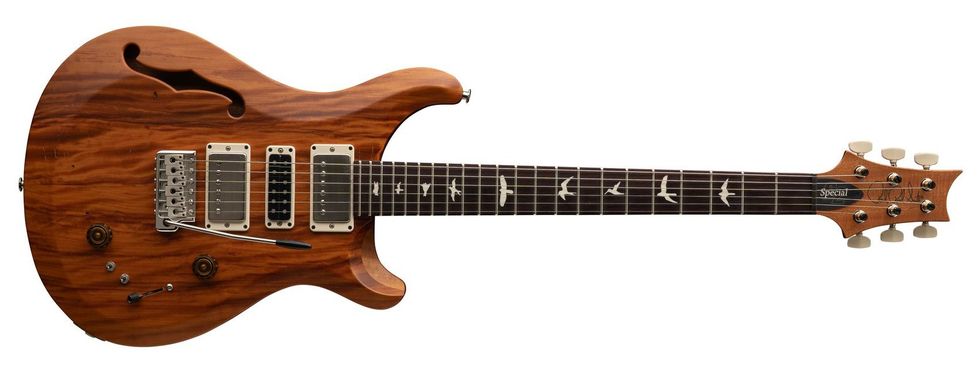
“Wood is a crucial element to our guitar making heritage. Michael Reid, our senior wood buyer, has been my curly maple wood provider and buyer since 1980 - before PRS was officially PRS - and we still work together as partners today. The deep relationships Michael has formed worldwide with our wood suppliers are remarkable. Guitars like this are a great way to highlight some of the interesting, personal stories from his travels and musical wood understanding,” said Paul Reed Smith.
The woods featured on this model include a Peroba Rosa top, Cuban mahogany neck, and Guaribu fretboard. Peroba Rosa, typically used as siding in Brazil, was selected for the top wood. The density of this 100-150-year-old wood combined with the semi-hollow body construction gives the S2 Special Semi-Hollow Reclaimed Limited Edition a unique sound that is punchy but also warm and full. The Cuban mahogany used for the necks was purchased from Puerto Rico, and some of this wood was salvaged from trees blown down by Hurricane Maria in 2017. Finally, the Guaribu Preto fretboards are sourced from Brazil, where this wood was historically used as support beams for houses. These guitars are left Natural in color and finished in satin nitro. Any nail holes, wear, or discoloration have been left in the top wood to showcase its history.
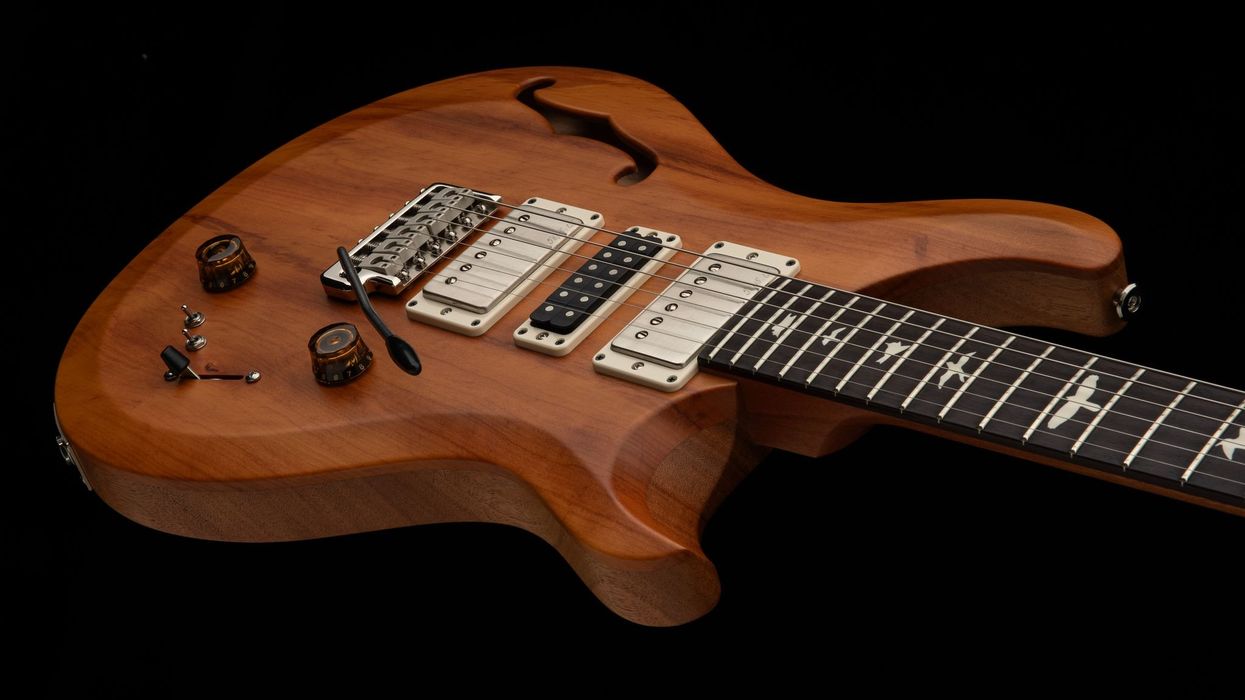
“It is impossible to fool a good guitar player. Everyone who has a guitar made from these woods sees them as a legitimate tool for serious players, not as a gimmick,” said Michael Reid, PRS Guitars Senior Wood Buyer. To hear more from Michael Reid on these woods and how these guitars came to be, visit the PRS Guitars Blog by clicking here.
Beyond their unique wood appointments, these instruments maintain many of the S2 Special Semi-Hollow’s standard specifications, including a 22-fret, 25” scale length Pattern Regular neck and hum/Narrowfield/hum pickup configuration. A 5-way blade switch and two mini-toggles allow players to tap the humbuckers, creating twelve distinct pickup combinations.
PRS Guitars continues its schedule of launching new products each month in 2025. Stay tuned to see new gear and 40th Anniversary limited-edition guitars throughout the year. For all of the latest news, click www.prsguitars.com/40 and follow @prsguitars on Instagram, Tik Tok, Facebook, X, and YouTube.
EMG’s New E-Series: Jazz Snap Meets Humbucker Punch!
PG contributor Steve Cook takes a look at EMG’s new E-Series bass pickups—a set of slim, soapbar, active pickups that feature wide-aperture coils and ceramic magnets. The E-Series offers big lows, articulate highs, and noiseless performance, the calling card of EMG’s active pickup designs. With drop-in replacement and full compatibility with EMG accessories, the E-Series presents a serious option for modern bassists.
Shop For Your E-Series: https://www.emgpickups.com/bass/e-ser...
Positive Grid and PosterLad Collaborate on Limited Edition Grille for Spark EDGE
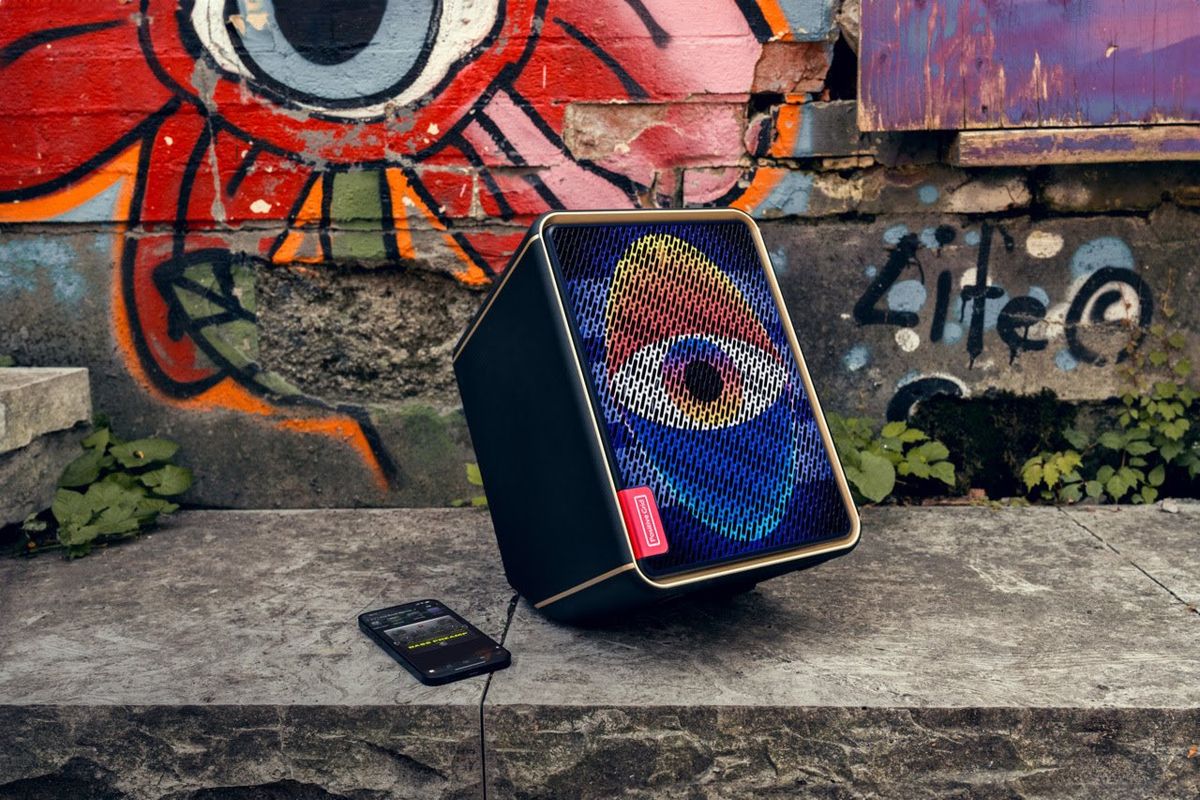
Positive Grid has teamed up with globally acclaimed visual artist PosterLad to present “See the Sound,” a custom, limited edition front grille designed exclusively for the Spark EDGE portable multi-channel smart guitar amp and PA.The design blends geometric vibrancy with sonic imagination to create a conversation between vision and sound.
PosterLad is the art project of internationally exhibited Czech designer Vratislav Pecka, whose exploration of bold color, geometry, and visual experimentation has earned global recognition and exhibitions in cities like New York and Paris. Highlighting the vision-sound connection in this custom design, PosterLad shares, “The eye is a symbol I revisit throughout much of my work. The colorful shapes underneath the eye are a visualization of sound waves emanating out from a central point that resembles a speaker cone. I call this piece ‘See The Sound.’”
About Spark EDGE
Spark EDGE is a multi-channel smart guitar amp & PA in one, designed for everyone seeking a portable, versatile, audio solution – from singer-songwriters and buskers, to acoustic duos and electric players. It packs 65 Watts of studio-quality sound, built-in amps and effects into a lightweight, compact unit that can serve as an amp, PA, or personal monitor.
Musicians can enjoy seamless and flexible connectivity for electric and acoustic guitars, bass, vocals, keyboards, and more, plus optional battery power (sold separately) that offers the freedom to perform anytime, anywhere.
In addition, a free companion app delivers convenient features that enhance any live performance, rehearsal and set list. These include a channel mixer; Creative Groove Looper; amp models; guitar and vocal effects; Smart Jam for playing live; and Spark AI to quickly generate custom guitar tones from simple text prompts.
Availability and Pricing
The Limited Edition “See the Sound” Spark EDGE grille is available for USD $49, while supplies last (see website for additional local pricing).
See it at positivegrid.com/products/spark-edge-grilles
Learn more about Spark EDGE at positivegrid.com/products/spark-edge.
The Way Huge Doom Hammer Fuzz Hits Hard & Heavy
The Way Huge Smalls Doom Hammer Fuzz will pound your ears with thick saturation worthy of high-desert riffage and dense walls of fuzz straight from a ’90s fever dream. It all began in the original Way Huge garage lab back in 1998 when Jeorge Tripps modified an op-amp-powered fuzz circuit from 1978 for the band Oranger. Prized for its less pronounced scoop, Mr. Tripps refined its design for a tighter low end and more reliable performance when played live on stage. Many years later he would craft a handful of prototypes based on that modded original—and these would be the basis for the sonic sledge now called the Doom Hammer Fuzz. Output, Tone, and Fuzz dials allow you to tailor the pedal’s velvety harmonics to your rig. Try a low Fuzz setting for the most delightful crunch.
Take up the hammer. Pound the Way Huge Doom Hammer Fuzz into your pedalboard.
It’s always darkest just before dawn…
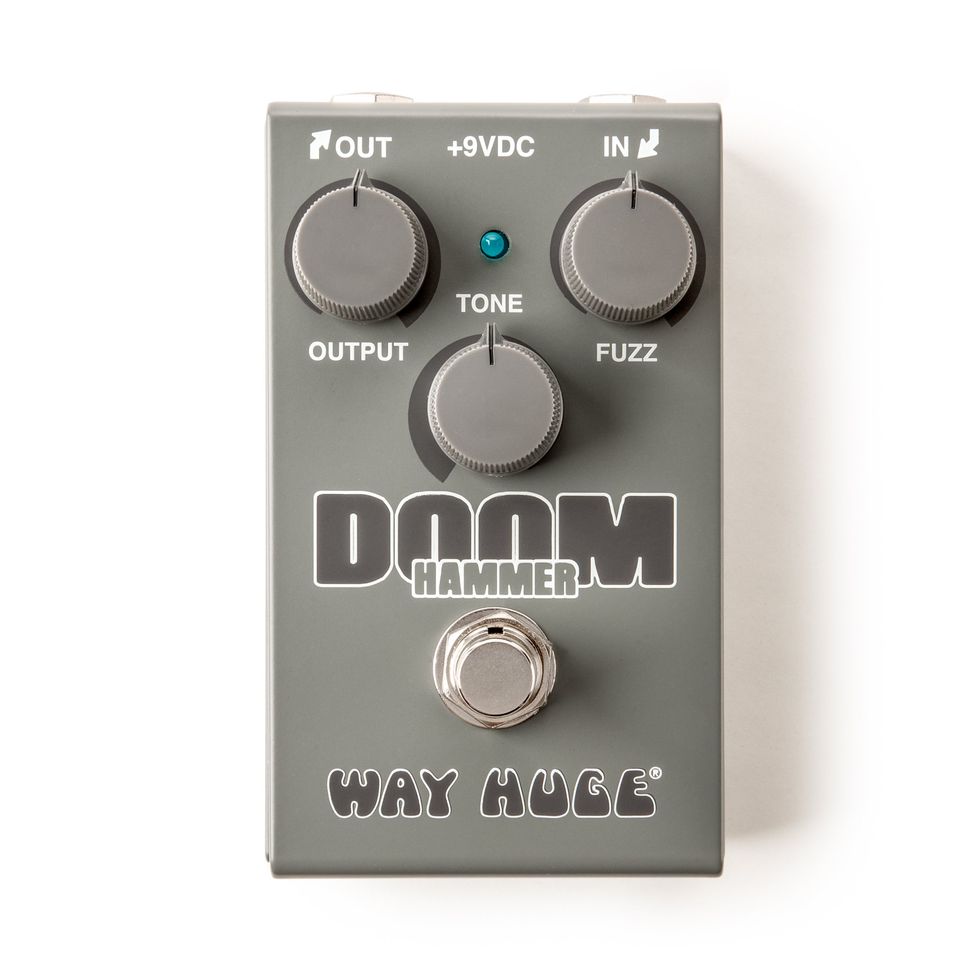
Way Huge Doom Hammer Fuzz highlights:
- Thick saturation for high-desert riffage and dense walls of ’90s fever-dream fuzz
- Based on a modded clone of an op-amp-powered fuzz circuit from 1978Tighter low end, less pronounced scoop, and improved performance on stage
- Output, Tone, and Fuzz dials tailor the pedal’s velvety harmonics to your rig
- Delightful crunch at low Fuzz settings
Availability
The Way Huge Doom Hammer Fuzz is available now at $169.99 street/$242.84 MSRP from your favorite retailer.
Way Huge Smalls Doom Hammer Fuzz Pedal
Doom Hammer Fuzz Pedal
Daniel Donato's Ever-Expanding Cosmic Country Universe

When Daniel Donato was 12, he heard “Paradise City” by Guns N’ Roses for the first time. He’d been living in Nashville since he was 7—his family had moved there from New Jersey, where he was born, after his father got a good-paying IT job with Davidson County in Tennessee—and he was just starting to become completely obsessed with guitars, guitar players, and guitar music. “I heard this certain part in the solo,” Donato recalls via Zoom from his perch in the back of a tour bus cruising through the mountains of Montana, “when it’s going into double time and Slash is hitting this….”
At this point, words fail and only scat, accompanied by enthusiastic hand-miming over a ghost fretboard, will do. “Doodala-doodala-didala-doodala-didala-doodala-daaahhh.…” He leans closer for a second, peering deeply into his phone screen to add, “It’s on the neck pickup,” then resumes his previous position. “I remember looping this piece of audio over and over because it was such bad-ness. It was like, how could a guitar possibly do that?”
Fast forward 18 years to 2025. Donato was working on his third full-length album, Horizons, with his band Cosmic Country at Sputnik Sound in Nashville. Two of the album’s most striking songs, “Chore” and “Down Bedford,” start out sounding like standard country tunes, but, over their considerable lengths (more than 11 minutes for “Chore,” almost 10 for “Down Bedford”), they morph into something more akin to prog or fusion, with dramatic time signature changes, dynamic shifts, and utterly commanding guitar solos. Think of Steve Morse’s work with the Dixie Dregs and you’ll be in the right ballpark. Sitting in the control room listening back to the final takes of these songs, Donato had a realization: He was reaching a level of musical energy he’d considered impossible as a preteen listening to Slash’s “Paradise City” solo. “I thought, ‘I’m kinda doing that,’” he says.
Donato isn’t bragging when he says this. There’s a big smile on his face, but his voice is infused with a humble awe that borders on disbelief. “It’s something that, at one point, I really prayed and worked hard to be able to do,” he says. “And now I could do it.”
Daniel Donato didn’t just achieve mastery of the guitar this year. His way with a Telecaster has been evident since at least his debut EP, 2019’s Starlight. But Horizons does bear all the signs of an early career milestone. It shows him finding his voice as a songwriter, somewhere in between the twang of Mickey Newbury and the grit of Robbie Robertson. And it’s the sharpest presentation yet of his own signature sound, which occupies the sweet spot where Americana, outlaw country, modern country, and jam-band music meet.
“I felt like I knew Jerry [Garcia] because I had the same desire, and he was giving me permission to do what he did, but in a way that was my own.”
Donato remains far from satisfied, however; he’s set his sights on something even bigger. “I’m still working on this one goal that I’ve had since I was 14 or 15,” he says. “You know when you can hear a single note from a player and you know who that player is? You can do that with Django [Reinhardt], with Jerry [Garcia], with Willie [Nelson], with all the greats. That’s my goal. If you can hear one of my notes at, like, 15-percent volume and know that it’s me, and that knowledge elicits a positive emotional response … that’s my number one, still.”
Funnily enough, Donato’s quest for individuality started with the video game Guitar Hero. “I loved playing it,” he says. “I loved practicing the game. And then, all of a sudden, one day I was like, ‘Man, I just want to play guitar.’ It really was that childlike and that simple.” Luckily, he already had an instrument on hand; his music-loving father, who was to become his first guitar teacher, had given it to him as a Christmas present several years earlier. Up until then, he’d barely touched it.
Dad did his job well. Within two years, Donato was busking on Lower Broadway in Nashville. And within three years, he was playing professionally with a local group called the Don Kelley Band and made it through the doors of Robert’s Western World, one of Music City’s few remaining genuine honky-tonk saloons, where his apprenticeship began in earnest.
“Robert’s is truly the home of traditional country music,” Donato explains. “When you go in, there are photos of Tom T. Hall hanging out there, of George Strait and Merle Haggard and Charley Pride. That building is where the pedal-steel guitar was invented. It’s where Willie Nelson bought Trigger. And it’s just a living testament to the spirit of that music. But what it is now is way different than what it was when I started going. It was only busy from 6 p.m. to closing, and then from 10 a.m. to 6, there would be these Western-swing bands that would play. All these musicians would pull up, park their cars right out front, and just go in”—unimaginable in today’s tourist-mobbed downtown.
“These were guys that played on the actual records that were being covered there,” he continues. “Amazing pedal-steel players and fiddle players that used to tour with George Jones and Merle and David Allan Coe and Johnny Paycheck, and they were just there playing for tips, picking into a Peavey solid-state amp and drinking a Budweiser. And I’d go see these guys every week and learn from them. Sometimes, once I’d gotten to know them, I’d go over to their houses and ask them, ‘What was that thing that you were doing over A7?’ and they’d say, ‘Well, I’m playing Em7 over A7, and that’s a substitution.’ And I’d be like, ‘What’s a substitution?’ It was all one-on-one. I travel this country a lot, I see a lot of places and people and music, and I haven’t seen a place like Robert’s, the way it was then.”
“I loved practicing [Guitar Hero]. And then, all of a sudden, one day I was like, ‘Man, I just want to play guitar.’”
Soon, Donato was taking private lessons with the likes of Brent Mason and Johnny Hiland, supplementing what he learned there with Advanced Placement music theory classes, and delving deep into the history and techniques of country music.
“Grady Martin and Hank Garland and Leon Rhodes, who played with Ernest Tubb for a long time, and Spider Wilson, the Grand Ole Opry’s house guitar player—they all played jazz,” he notes. “They loved Charlie Parker. They were copping Charlie Christian lines, and they were all doing that style on hollowbody guitars.
Daniel Donato’s Gear
Guitars
Two DGN Custom Epoch semi-hollow three-pickup T-style electrics
Fender Custom Shop Telecaster
Tangled String/Danny Davis custom 00-size acoustic
Amp
1966 Fender Pro Reverb
Effects
Universal Audio Max preamp/dual compressor
Keeley Rotary
Keeley Cosmic Country phaser
Keeley Manis overdrive
Keeley Noble Screamer overdrive
Walrus R1 reverb
Strymon Timeline delay
DigiTech FreqOut
Eventide H90 harmonizer
Dunlop expression pedal
Gamechanger Audio Plus sustain
Fender Tone Master Pro multieffects/amp modeler
Strymon power supplies
Strings, Picks, and Cables
Ernie Ball Cobalt Slinkys (.010–.052)
Dunlop acrylic picks
Mogami cables
They weren’t even playing Teles. And a lot of that history transitioned into the era of guitar players that I learned from, like Brent, who loves George Benson, who loves Jerry Reed—and Jerry Reed played with all those old Nashville jazz cats. There’s a lot of guitar players in Nashville who’ll do, say, a Phrygian dominant substitution over a dominant-seventh chord on a honky-tonk tune. And it’s truly Nashville, in a way that only like 30 people know.”
Donato announced his intention to join that lineage early on in his recording career. At one key moment in his blazing solo on “Meet Me in Dallas,” from his first full-length, A Young Man’s Country (2020), he repeats a high C major triad over F and E flat chords, a cool extension of the harmony that immediately thrills the ear. Hank Garland would be proud.
“Amazing pedal-steel players and fiddle players that used to tour with George Jones and Merle and David Allan Coe and Johnny Paycheck … were just there playing for tips, picking into a Peavey solid-state amp and drinking a Budweiser.”
The next foundational piece in the Daniel Donato puzzle fell into place when he was 17, playing regularly at Robert’s Western World while still in high school. At 7:30 one Thursday morning, his U.S. history teacher asked for a brief private audience after class. When class ended 45 minutes later, the teacher pulled three huge binders from behind his desk. As Donato remembers it, “He said, ‘I saw you last night at Robert’s with my fiancée, and I want to give you some music that I think you’ll like.’”
In those three binders were more than 200 CDs, all featuring music either by or related to the Grateful Dead. “It was 35 volumes of Dick’s Picks. It was the Jerry Garcia Band through every era. It was Jerry’s duo with [upright bassist] John Kahn. It was Legion of Mary [Garcia’s band with keyboardist Merl Saunders]. It was The Pizza Tapes [which Garcia recorded in 1993 with bluegrass musicians David Grisman and Tony Rice]. It was The Phil Zone [a collection of vintage Dead live recordings chosen by bassist Phil Lesh]. It was everything possible.”
Donato was familiar with the Dead to some degree—his mom was a fan and his uncle had dropped out of school to follow them around the country in his youth—but this was a far deeper immersion. The first disc he put on was Dick’s Picks Vol. 3, recorded at the Hollywood Sportatorium in Pembroke Pines, Florida, on May 22, 1977. “That has a great version of ‘Big River’ on it,” he says. “I played ‘Big River’ with Don Kelley, and I always loved that song. When I heard the Dead play it, I was like, ‘Oh man, this song could be more than four minutes long. It’s okay to hang on the A for three minutes on the intro.’ And that, to me, was something approaching a revelation: how you can take country tunes and kind of dance around them. I felt like I knew Jerry because I had the same desire, and he was giving me permission to do what he did, but in a way that was my own.”
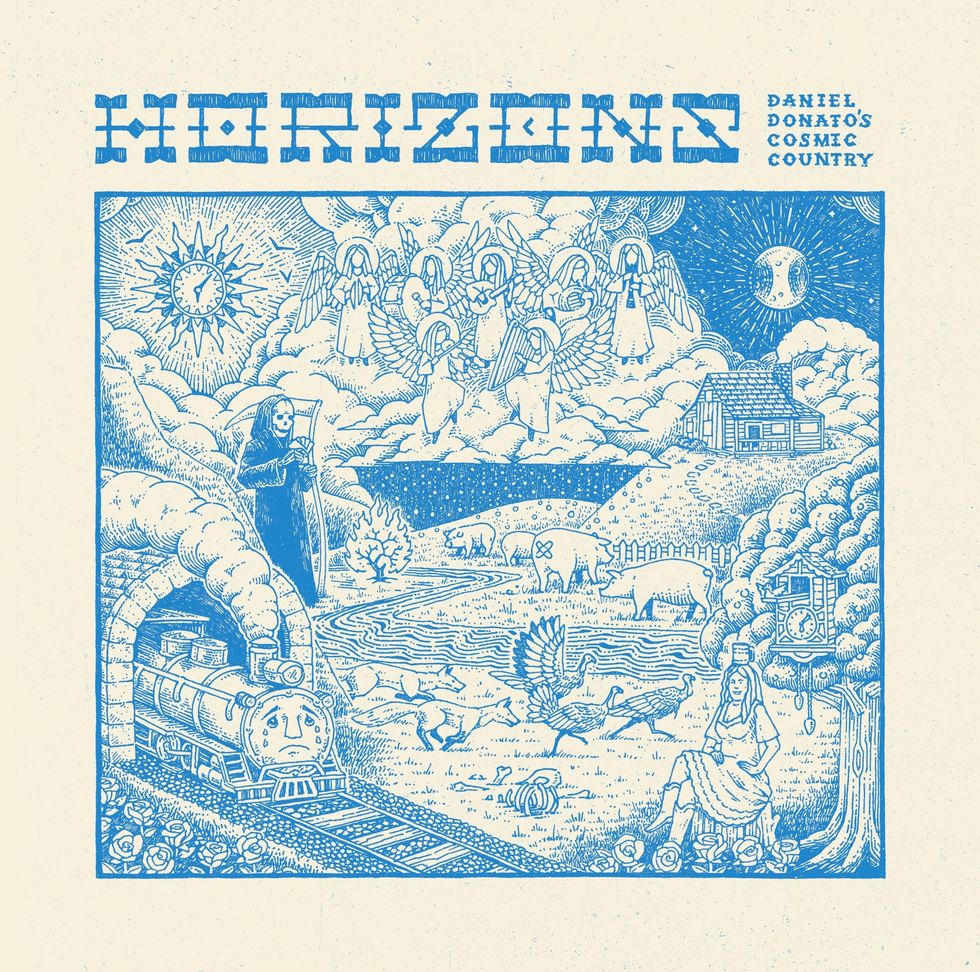
There’s no question that you can hear Garcia in Donato’s style: the long conversational solos, the playful use of arpeggios, the fondness for effects pedals—like the octave, the envelope filter, and especially the phaser—whose tones hearken back to the country-rock of the ’70s. (Although Donato points out, rightly, that the phaser was at one time a fixture of mainstream country as well: “Back in the day, all the Nashville cats would have a Maestro or MXR phaser and they’d turn it to where it’s pretty much just like a level boost. It’s barely on. That’s a real old-timey, traditional use of the effect.”)
Still, the Dead’s impact on Donato goes well beyond sound or improvisational approach or even musical qualities of any sort. The example they set as performers has helped guide him toward a way of presenting himself to the world, and the marketplace. Look at his Bandcamp page and you’ll see for sale complete recordings of every concert he’s played for the last several years. It’s a tactic that feels both generously fan-centric and cannily entrepreneurial. It also makes one think of Dick’s Picks and The Phil Zone in the way it builds a mystique around the live experience.
“There’s American bands by musical nature and then there’s American bands by functionality,” Donato posits. “And the Dead were both of those. They strived to keep ticket prices low. They played venues that they didn’t care if they didn’t sell out, because they wanted everybody to get in. They would change the set list every day because they wanted to cater to the people that were in their community. And they would give away their music [letting fans tape the concerts and then circulate the tapes among themselves]. I really like that [David] Letterman interview when Jerry said, ‘We’re done with it. It’s theirs.’ There’s a free-market element to that that’s uniquely American. And it definitely informs the ethos of Cosmic Country, in a big way.”Electro-Harmonix Introduces the Bender Royale Germanium Fuzz
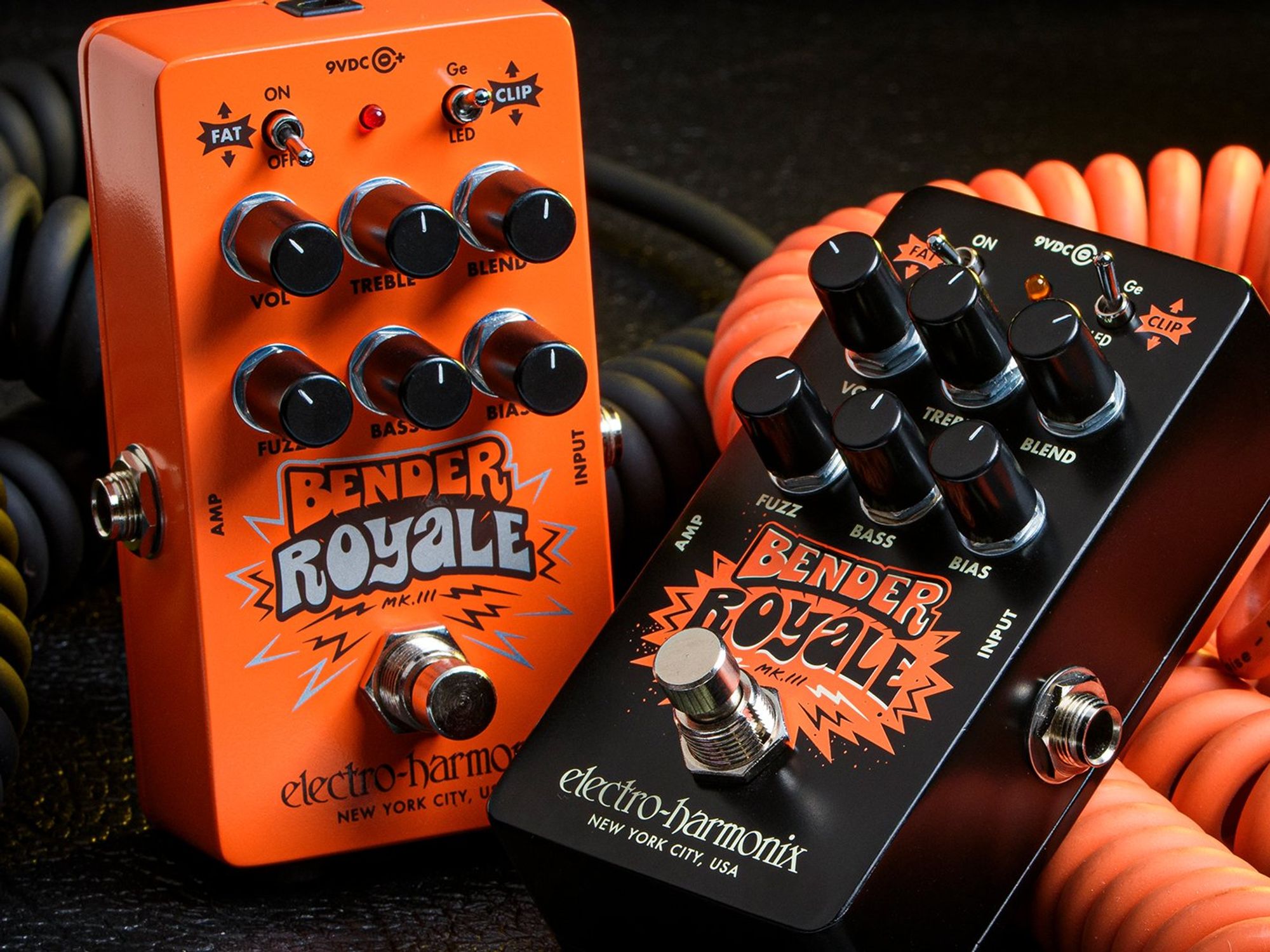
Sitting between the original vintage vibes of a 2-transistor fuzz and the over-the-top wall of sonic mayhem that is that 4-transistor Big Muff is the humble 3-transistor Tone Bender-style of fuzz known for being punchy with a unique sonic texture. The EHX Bender Royale is Electro-Harmonix’s new take on the Germanium MkIII version of the circuit with a ton of added flexibility to bend your tone even further. From thick and smooth to brash and spitty, the Bender Royale has a range of sounds all its own.
Housed in EHX’s Nano-sized chassis, the Bender Royale builds on a standard control set of VOL, FUZZ and BASS (originally Treble <-> Bass) controls for an authentic, familiar feel. The FAT switch adds bass and low-mids for tonal thickness. Use the BIAS knob to dial in a sweet spot for the perfect amount of rip or leave the circuit starving for voltage. Switching the CLIP switch from Ge to LED re-biases the final germanium transistor to produce a rougher edge on the fuzz tone. The TREBLE control is an active treble shelving filter used to rein in high frequencies. The BLEND knob mixes between your wet and dry signals and can be especially useful for maintaining clarity when using bass or stacking other drive pedals.
The Bender Royale employs mechanical relay true-bypass switching on a soft footswitch with selectable latching/momentary functionality. Tap the footswitch for normal latch switching function or press and hold for momentary blasts of fuzzy goodness.
The EHX Bender Royale comes equipped with a standard EHX 9 Volt power supply. It is available now and features a U.S. Street Price of $149.00.
Learn more at www.ehx.com
Orangewood Introduces First Semi-Hollow Electric Guitar: The Clementine
Orangewood has launched the Clementine, the brand’s first semi-hollow electric guitar and its most premium guitar release to date. As Orangewood continues to expand its lineup beyond acoustics, Clementine represents a new chapter for the brand.
Designed with a comfort-first approach, the Clementine features chambered construction, solid body, solid carved maple top, and a deep belly cut for a smooth yet resonant playing experience. Its glossy maple top paired with satin-finished mahogany back and sides delivers a refined blend of textures and looks. Grover Roto-Grip Locking Vintage tuners and a Tune-O-Matic bridge ensure stability and long-term durability.
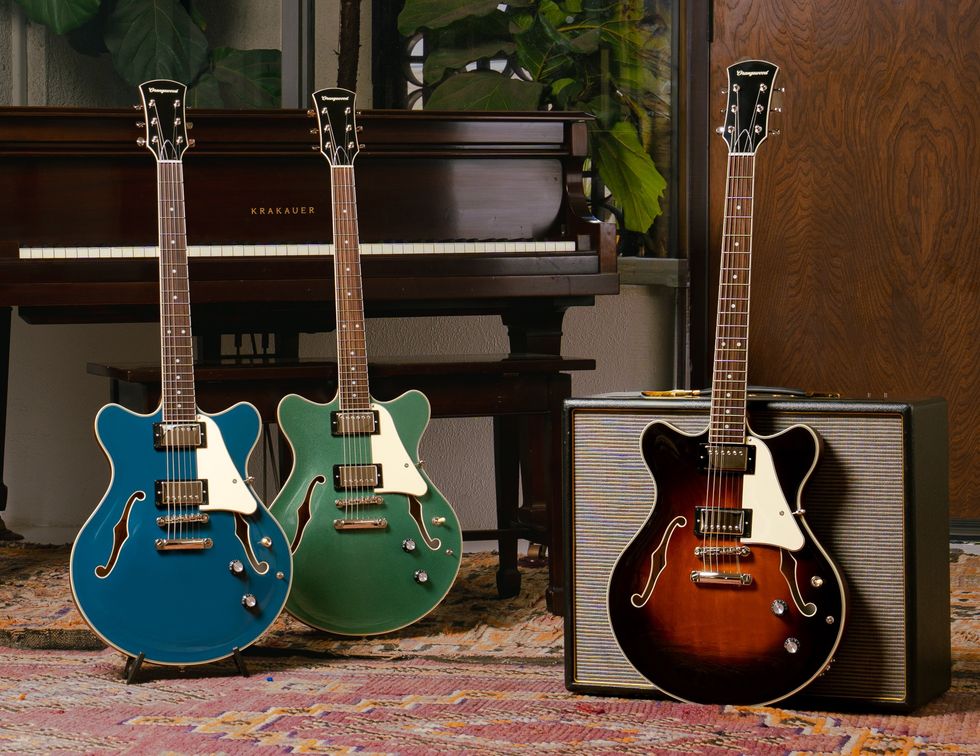
The Clementine is equipped with Seymour Duncan Seth Lover™ humbuckers, known for their warm, articulate response. A coil-split toggle alongside standard volume and tone controls provides a wide tonal range. Player-friendly features, including headstock truss rod access and an electronics backplate, make maintenance simple both at home and on tour. A retro 3-ply cream pickguard comes installed, with a bonus black pickguard for players who want to customize the guitar’s aesthetic.
The Clementine semi-hollow electric guitar is available in three finishes—Americano sunburst, Bluebird, and Evergreen—and is priced at $1,495.
KEY SPECS
- Comfort-first design: A modern semi-hollow electric guitar with chambered construction, solid carved top, and deep belly cut
- Solid wood, smooth textures: Glossy maple top with satin mahogany back & sides
- Specialty hardware: Grover Roto-Grip Locking Vintage tuners and Tune-O-Matic bridge
- Award-winning pickups: Seymour Duncan Seth Lover™ humbuckers with three-way pickup selector toggle switch; two-way coil-split toggle switch; and volume/tone controls
- Maintenance: Headstock truss rod adjustment; backplate for electronics access
- Extras: Retro 3-ply cream pickguard installed, with a bonus black pickguard to switch up your style
The Clementine is available now exclusively at orangewoodguitars.com and through select retailers. Priced at $1,495.00 with a hardcase included.
The Nashville Sound: Behind the Scenes with the City's Top Session Guitarists
If you’ve ever wondered what really happens at floor level in a Nashville studio, this one’s for you. We stitched together a handful of Rig Rundowns with the city’s busiest session guitarists, all focused on the real heroes of their rigs: the pedalboards. It’s equal parts gear tour, tone philosophy, and survival strategy for players who have to nail a part in one take.
Tom Bukovac Rig Rundown
Rob McNelley Rig Rundown
Sol Philcox-Littlefield Rig Rundown
Derek Wells Rig Rundown
Charlie Worsham - Full Rundown
Adam Shoenfeld
Overloud Announce Gem Fuse: Six Analog Processors in One Plugin
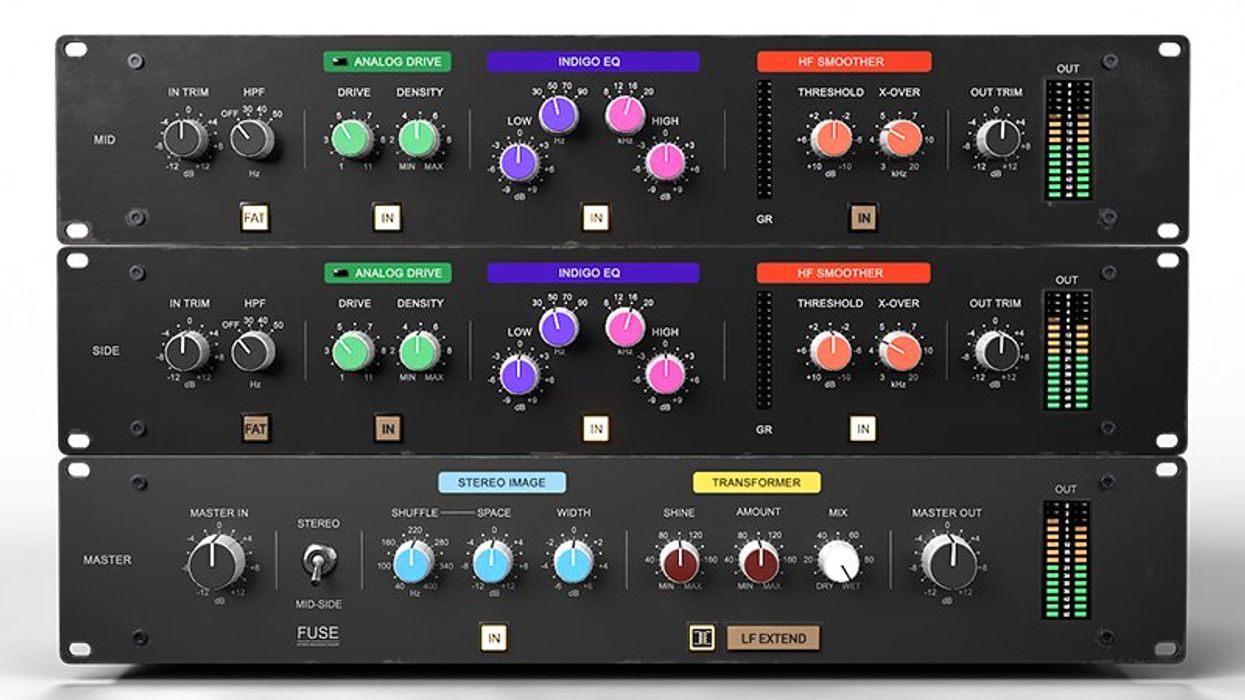
ILIO, leading distributor of virtual instruments and audio processing software, and Overloud, renowned for their innovative audio plug-ins and acclaimed Gem Series, proudly introduce Gem Fuse. Bringing together six analog-style processors in a single plugin, Fuse emulates an acclaimed modern stereo outboard unit with a level of authenticity never before achieved in software.
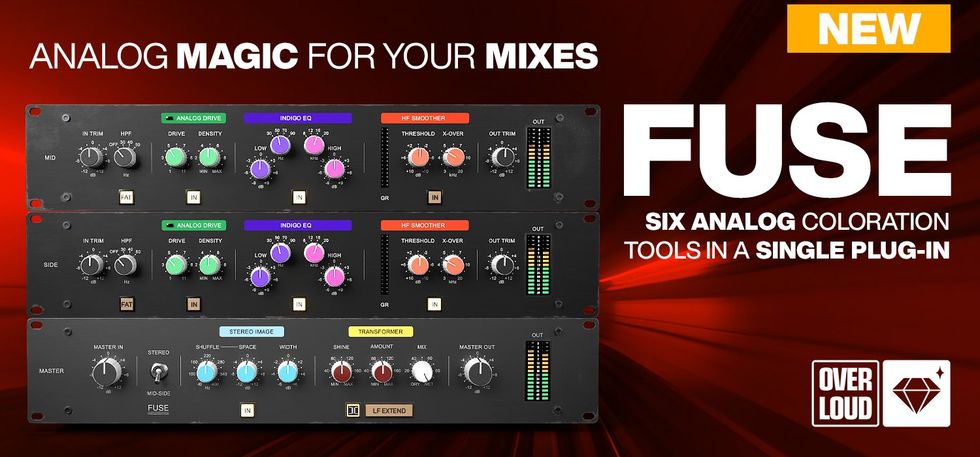
Designed for the mix bus and mastering, Fuse provides the tonal color, weight, and cohesion that define great analog hardware. At its heart is Overloud’s Harmonic Matching Technology, which precisely captures the frequency-dependent harmonics and “memory effect” of transformer-based circuits—where most digital emulations, even official ones, fall short.
Introductory Price: $69 (regularly $119).
Download the free trial or purchase here - https://www.ilio.com/overloud-gem-fuse
Six Processors, One Plugin
- Analog Preamp & HPF: Adds subtle coloration and warmth with a low-cut “Fat” option for preserving deep bass.
- Analog Drive: Harmonic saturation and gentle compression, from smooth thickening to aggressive tone.
- Indigo EQ: Musical low and high shelving EQ with carefully tuned phase response.
- HF Smoother: High-frequency dynamic processor for taming harshness with tape-like smoothness.
- Stereo Image: Frequency-dependent stereo enhancement based on the “Stereo Shuffling” technique.
- Transformer: Authentic low-end thickening and high-end sparkle through accurate transformer emulation.
Beyond the Hardware
Fuse enhances and expands upon the original hardware with modern conveniences:
- Resizable interface
- Built-in Mid-Side matrix
- Internal operating level calibration
- Multilevel undo/redo
- Extended parameter control for added flexibility
Whether placed across the mix bus or used in mastering, Gem Fuse adds the finishing character and cohesion that transform a mix into a record—now with the unmatched accuracy of Overloud’s Gem Series.
Learn more - https://www.ilio.com/overloud-gem-fuse
Cort Guitars Unveils the Earth GO: A Smart Acoustic Guitar for Modern Musicians
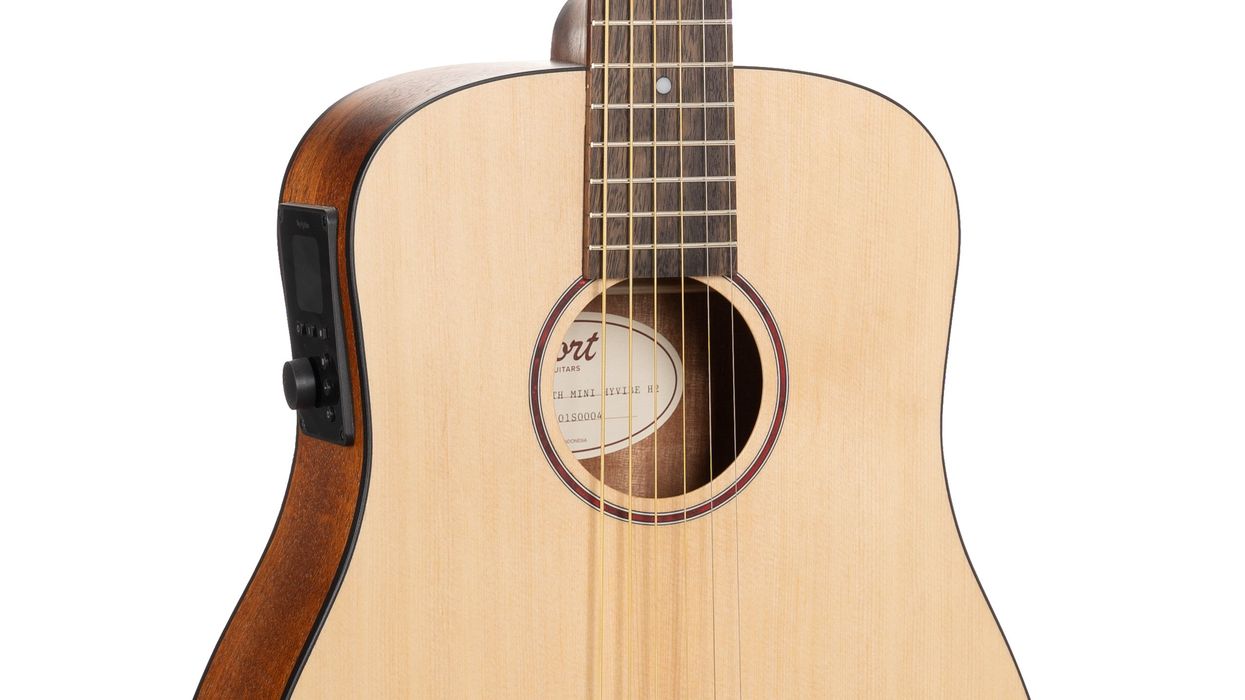
Cort Guitars announces the launch of the Earth GO, a compact acoustic guitar that seamlessly blends classic tonewoods with modern smart technology. Designed for musicians seeking portability, versatility, and innovative features, the Earth GO brings intelligent performance capabilities to a traditional acoustic form.
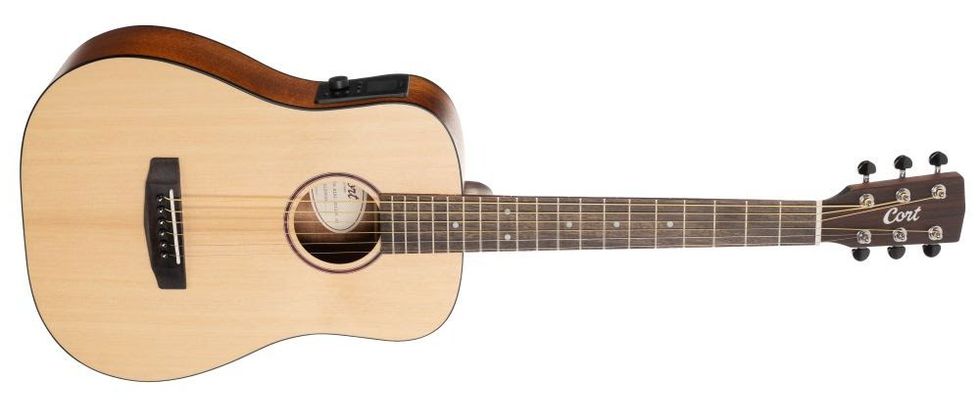
The Earth GO features a 3/4 size mini dreadnought body, making it ideal for travel, casual play, or players with smaller hands. A solid Sitka spruce top delivers clarity and responsiveness, while mahogany back and sides provide warmth and depth. This time-honored tonewood pairing ensures a balanced and resonant acoustic voice. The guitar’s neck is constructed from mahogany and shaped with a comfortable “C” profile, paired with a 22.8” (578mm) scale length for easy playability. A laurel fingerboard with 6mm white dot inlays and a 15.75” radius adds to the natural feel, while the PPS nut (43mm wide) and 19-fret configuration support accurate intonation. Both open pore and open pore brown burst finishes complete the vintage aesthetic.
At the heart of the Earth GO lies the HyVibe H2 smart system, which turns the guitar into a self-contained performance hub. Built-in features include customizable effects such as reverb, chorus, delay, tremolo, octaver, phaser, and distortion—without the need for external pedals. Players can stream backing tracks via Bluetooth, loop melodies, tune up with the integrated tuner, or keep time using the onboard metronome. Whether practicing at home or playing live, these intuitive tools offer unmatched creative freedom.
Hardware details include die-cast tuning machines with black knobs, a dual-acting truss rod for neck adjustments, and a laurel bridge paired with a PPS saddle. The Earth GO comes factory-equipped with coated strings for extended life and best feel. Each guitar includes a gig bag for even more portability and convenience when travelling.
For additional information on the Earth GO, please visit www.CortGuitars.com.
Street Price: $549.99 USD
Jazz Chords in a Rock Context
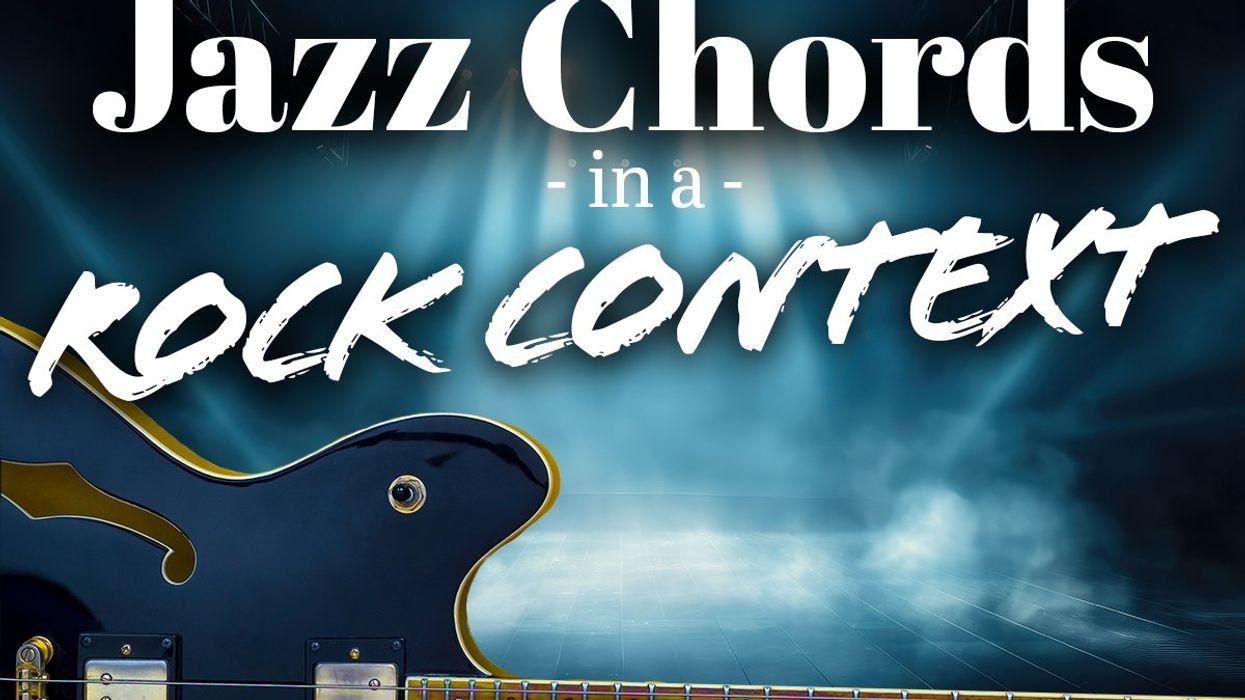
So-called “jazz” or “jazzy” chords were in use long before jazz, but it’s jazz musicians who have, arguably, made those most of 7th and extended harmonies. So, what are they? Simply put, jazz chords are triads—chords built from the 1, 3, and 5 of any given scale—with added 7, 9, 11, or 13 intervals. They can also include alterations, such as b5s, #5s, b9s, and #9s.
Rather than bog you down with more theory, let’s put these chords into practice, with plenty of points of reference from the rock genre. Along the way you should naturally start to develop an ear for, and an understanding of, their colorful sounds and benefits.
Classic Rock
Let’s start with one of the best-selling albums of all time, Pink Floyd’s Dark Side of the Moon. Maybe Floyd’s inclusion of jazzy chords is one of the reasons people still find this album appealing and refreshing.
Ex. 1
Ex. 1 is a variation on the end of Floyd’s “Time”—aka “Breathe (Reprise).” This example, complete with flange effect, demonstrates both Em9 and A13 arpeggios. In the key of D, that’s the IIm chord moving to the V chord, an E Dorian sound. These are followed by the essential chord shapes for both major 7 and minor 7 (in this case Cmaj7, Bm7, Fmaj7, Em7). We end with the so-called “Hendrix chord,” a 7#9, moving to a 7b9 chord (uncommon in rock), resolving to a second major 7 shape. This is a tremendously valuable progression, and time (no pun intended) should be taken to memorize all of the chord shapes.
Ex. 2
Ex. 2 comes to us via Led Zeppelin’s eclectic double album Physical Graffiti, specifically “Ten Years Gone.” This track contains more major 7 chords, including one slash-chord version. A slash chord is when the note in the bass is different than the root of the chord, in this case Bbmaj7/A. Here we also find a diminished 7th chord (this is another fundamental shape all guitarists would do well to memorize) functioning as a hip passing chord between Amaj7 and Em7.
Ex. 3
Ex. 3 has the great Edward Van Halen getting into the jazzy chord game, kind of. This progression, à la “Secrets,” contains sus chords—triads wherein the 3rd is replaced (or suspended) by the 2nd or 4th. And, while not uncommon in jazz, these are probably not the first jazz chords that come to mind. Nevertheless, Van Halen’s use of them is unique and worthy of mention. After running through the sus chords, Eddie lands on a rather ambiguous chord that I have labeled Dmaj9, but which could also be thought of as an A/D. Either way, it’s the sophisticated nature of this chord that earns it a spot in this lesson.
Ex. 4
While Bob Marley is known as a reggae icon, there was plenty of crossover between reggae and rock, which allows us to take a look at Marley’s “Waiting in Vain” in Ex. 4. This example once again features the major 7th shape we worked on in Ex. 1, as well as a new shape for major 7 chords—in this instance, the Gmaj7. This shape can be tricky for players as it employs all four fingers, with the pinky far across the fretboard.
Funky Strums
Ex. 5
Let’s keep moving with some jazz chords in a funky rock situation. Ex. 5 is an imitation of Steely Dan’s “Kid Charlemagne,” featuring four different chord shapes, including an F6, with the bass note fretted with the thumb. Make an effort to mute the 5th string on each of these chords. Also, note how the Bb13 chord substitutes for an E7#9 at the end (other than their roots, the chords share three of the same notes).
Ex. 6
Ex. 6, reminiscent of the Red Hot Chili Peppers’ “If You Have to Ask,” contains the biggest variety of chords in this lesson, and time should be taken to master both the shapes and the funky right-hand strum pattern. These 9th chords are funk essentials but also play a big role in jazz.
Jazzy Metal Arpeggios
Our final two examples represent the world of contemporary metal. In both cases, their functions as mellow, arpeggiated intros that transition into heavier verses and choruses, have their roots in the classic metal of the 1970s and 1980s.
Ex. 7
Ex. 7 was inspired by Deftones’ “Sextape” and contains a lush major 7 shape, moving between the I and IV chords. In the first four measures, the shape contains only fretted notes; in the following four, the open high-E string is included, adding even more color, changing the major 7th into a major 9 and major 6.
Ex. 8
Finally, Ex. 8 features not only jazzy arpeggios, but also some mixed meters, with the time signature moving between 6/8 and 7/8. This progression was inspired by “The Coma Machine” by Between the Buried and Me, and introduces us to both a minor 6 chord and an augmented shape.
Keep It Clean?
You may have noticed that all of the examples in the lesson (except for the last group of arpeggios) feature a clean, non-distorted tone. One reason for this is that all the points of reference (except Ex. 8) I mentioned were recorded with clean tones. Another reason is that using distortion on these chords with extensions can make them sound messy and undefined, detracting from the point of the extensions. By contrast, distortion on power chords makes the chords sound sharp and biting. That said, feel free to crank up the overdrive and test for yourself. With enough experimentation, you may create the perfect combination of rock and jazz.
IK Multimedia Releases iLoud Precision MKII Studio MonitorsWith the New ARC X System
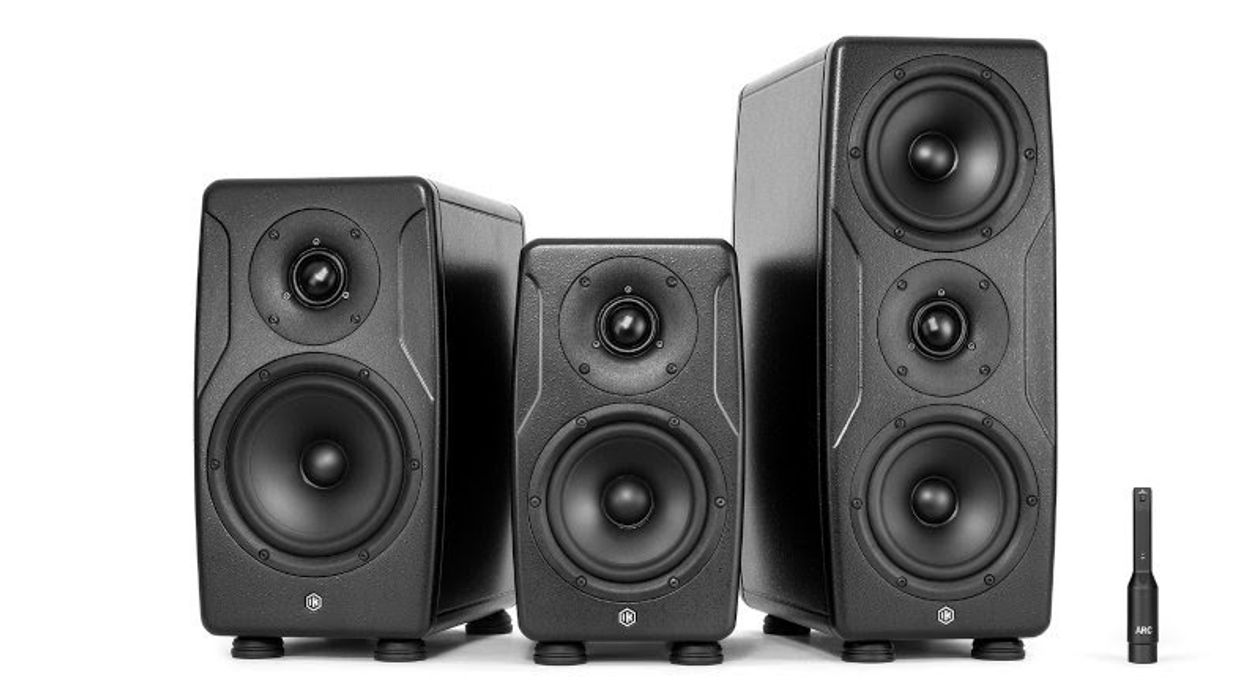
The next generation of IK's critically acclaimed studio monitors offers superior acoustic correction with ARC X, along with enhanced performance and more mounting options.
IK Multimedia is proud to release the iLoud Precision MKII studio monitors, which build on the legacy of their critically acclaimed predecessor to offer unparalleled accuracy, advanced DSP control, and seamless integration with the new ARC X room correction and calibration software, providing the fastest and most accurate mixing yet.
Next-level Precision and Integration
When monitors reveal every nuance, issues can be addressed before they develop into problems. The iLoud Precision MKII delivers the unfiltered truth of a mix, enabling users to work more efficiently, maintain their flow, and finish with confidence, knowing that the sound will translate on any system, anywhere. Whether producing music, mixing for clients, or creating content for global platforms, these monitors provide the ultimate reference.
Key MKII Enhancements:
- New ARC X Acoustic Correction: ARC X dramatically upgrades Precision's auto-calibration to full acoustic correction.
- ARC X Customization: Coupled with new speaker customization options and virtual monitor profiles, ARC X and iLoud Precision MKII deliver the most advanced and versatile mixing experience yet.
- New Advanced Tweeter Design: Ultra-lightweight construction and graphene reinforcement enhance rigidity, improve transparency, and minimize distortion.
- Improved Enclosure: A new enclosure optimizes sonic clarity, providing precise transient response and an improved soundstage presentation critical for immersive setups.
- New Mounting Options: New built-in fixing mounts and dedicated metal brackets (available separately) make it easier to mount speakers and precisely set angles for optimal positioning.
Reference-grade Clarity and Translation
The Precision MKII is designed to deliver best-in-class transparency. Its linear phase and time-coherent design ensure exceptional imaging accuracy, allowing users to position every element of their mix with confidence. With an impressively flat response of ±1 dB from 45 Hz to 30 kHz and an extension down to 37 Hz at -4 dB, it provides full-spectrum clarity and precise low-end reproduction.
The outcome is impressive clarity across the frequency range, enabling users to create more efficiently, make informed decisions, and trust that their mix will translate effectively anywhere.
Includes New ARC X System
The Precision MKII integrates seamlessly with the ARC X system, IK's new Advanced Response Correction technology, delivering intelligent 3D acoustic correction directly into users' workflows.
ARC X enhances IK's award-winning ARC 4 by automatically analyzing the listening area at three distinct heights, creating a 3D snapshot of the space and effectively identifying acoustic issues without over-processing the sound. The result is a remarkably natural correction that feels like simply mixing in a properly treated room.
With just a few moments of measurement, ARC X generates and applies a precise correction for a flat frequency response, eliminating room-induced issues that can obscure mixing decisions. The correction profile is then loaded onto the iLoud monitor, which stores the profile for standalone use.
Beyond correction, ARC X enhances any setup with customizable system tuning and advanced speaker emulation. Users can tailor their monitoring systems to match their personal preferences or emulate over 20 iconic speaker systems, ranging from high-end studio monitors to consumer playback devices. Whether working in a professional studio, a treated home environment, or a portable setup, ARC X ensures that all monitors function at their full potential.
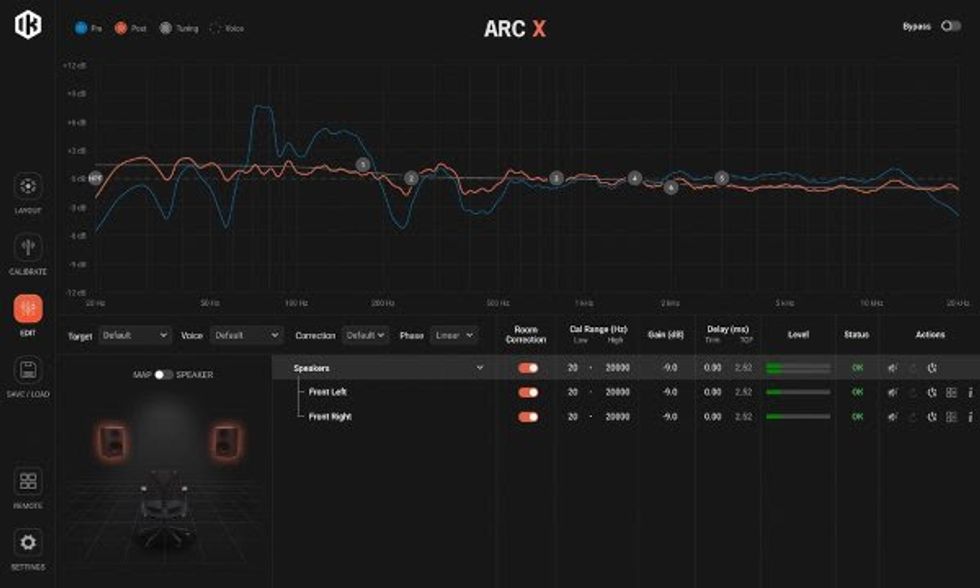
A Free Update and Upgrade
ARC X software replaces both X-MONITOR and ARC 4 software and comes included with the Precision MKII. Registered owners of the original iLoud Precision studio monitors can download ARC X for free through the IK Product Manager, along with the firmware update below.
ARC X is also fully compatible and free for all registered owners of iLoud Micro Monitor Pro, iLoud MTM MKII, ARC Studio, and ARC 4 software, enabling users to mix more effectively anywhere, whether on their iLouds or through the plug-in on another set of monitors.
A Future-proof Investment
The Precision Series MKII features completely redesigned firmware, enabling faster feature updates within the ARC ecosystem. This leads to continuous improvements in setup, correction, and control, keeping systems at the forefront of audio innovation. With seamless ARC X integration, users will benefit from automated room correction and advanced calibration, ensuring their studio monitor remains cutting-edge.
Professional Integration
Built-in fixing mounts and optional mounting brackets simplify the integration of the iLoud Precision MKII into immersive environments such as Dolby Atmos rooms or complex multi-channel setups. For enhanced control, the iLoud Precision Wired Remote Control is a compact device that allows users to switch between up to four ARC X profiles, assign functions like Mute or Dim, and directly manage the room correction process from their listening position.
With unmatched transparency, precision, accuracy, and advanced calibration tools, the iLoud Precision MKII redefines what's possible in modern monitoring, enabling users to create more efficiently, finish with confidence, and trust their audio.
Pricing and Availability
iLoud Precision MKII studio monitors are available for purchase from the IK Multimedia online store and IK-authorized dealers worldwide at the listed prices. All Precision models include ARC X control software and plug-in, and Precision pairs also come with an ARC Measurement microphone (a $/€199.99 combined value).
iLoud Precision 5 MKII - €699.99/$799.99* ea. - 5" Woofer + 1.5" Tweeter, 135W RMS
iLoud Precision 6 MKII - €799.99/$899.99 ea. - 6.5" Woofer + 1.5" Tweeter, 150W RMS
iLoud Precision MTM MKII - €899.99/$999.99 ea. - 2 x 5" Woofers + 1.5" Tweeter, 175W RMS
iLoud Precision Isolation Pods - $/€49.99 - 4-pack (suitable for one monitor)
iLoud Precision MKII Mounting Brackets - $/€99.99 (5 and 6), $/€129.99 (MTM)
iLoud Precision Remote Control - $/€99.99
ARC X - $/€99.99 intro price (reg. $/€199.99) - Advanced room correction plug-in and measurement microphone.
*All pricing is excluding taxes.
For more information about the iLoud Precision MKII series or to see the studio monitors in action, please visit: www.ikmultimedia.com/iloudprecision
Anthology Gear Releases New Guitar Strap: Harvest
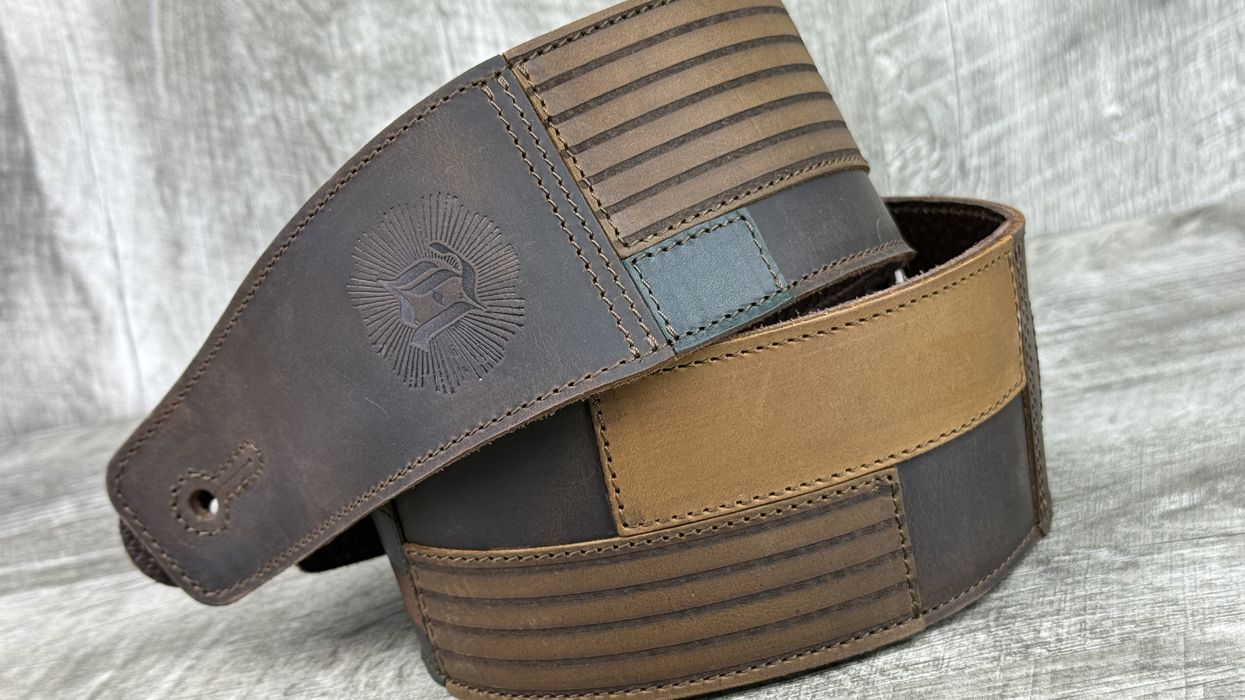
Anthology Gear has released its newest guitar strap called Harvest, inspired by the aerial view of farmlands - the patchwork of squares in varying colors of gold, brown and green that blankets the landscape. Coinciding with the 40th anniversary of Farm Aid on September 20, Harvest will support family farms via donations made to the organization.
Just prior to the release of the Harvest guitar strap, Anthology Gear made its first donation to Farm Aid and will continue to donate $10 for every Harvest strap sold on the Anthology Gear website www.anthologygear.com. Additionally, one Harvest guitar strap will be included in the Farm Aid 40 Memorabilia Auction. Often autographed by artists at the festival, these items will be open for bidding September 20 through October 3 on the Farm Aid website at farmaid.org/auction. Proceeds raised by the auction support Farm Aid’s work.
“In addition to providing high quality crafted leather goods, we want to add even more meaning to our small business and support organizations that matter to us,” says Katya Hirsch, Co-Owner of Anthology Gear.
All Anthology Gear guitar straps offer the following features:
Straps are made with high quality full grain leather which burnishes and beautifies with use
Leathers are chosen for their ability to fully distribute the weight of the guitar across the strap, for a more comfortable playing experience
A high-density premium padding maximizes comfort
Straps adjust from 39" - 54" in length; length can be extended to up to 63” with an optional jumbo tongue
Pricing for the Harvest guitar strap is $149 (with free shipping within the USA) and can be purchased directly from Anthology Gear at www.anthologygear.com.
Sweetwater Announces Full Artist Lineup for GuitarFest

The list of artists scheduled to appear at Sweetwater’s GuitarFest has been finalized. GuitarFest is taking place Saturday, September 27, on the company’s Fort Wayne, Indiana, campus. Music legends, industry leaders, and more than 70 top brands will welcome guitar lovers to this all-day event scheduled from 9AM to 5PM.

As the nation’s leading online retailer for music makers, Sweetwater has a full day of activities planned for GuitarFest attendees. Renowned guitar brands such as Gibson, Fender, Marshall, and many others will have booths, giving guitar enthusiasts the chance to speak directly with brand experts about their favorite brands. Guitar lovers will be able to get up close to thousands of guitars on display, including an entire section of unique and one of a kind guitars only available at Sweetwater.
GuitarFest will also feature appearances by major artists and other music industry notables. Confirmed artists for this year’s GuitarFest include PhilX, Yvette Young, Ariel Posen, Rob Scallon, Courtney Cox, Reeves Gabrels, Ken Susi, Freekbass, Fluff, Danish Pete, Chris Holt, Bella Perron, Bakithi Kumalo, Al Joseph, Beau Burcell, and Phil Demmel. You can see the full list of artists appearing at Sweetwater.com/guitarfest/.
Sweetwater will showcase legendary gear from the exclusive Rock & Roll Hall of Fame collection. The gear on loan includes Nita Strauss’s personal Signature Series Ibanez from her Wrestlemania tour, Slash’s Appetite for Destruction prototype that was used live from 2011 to 2025, Zakk Wylde’s iconic Gibson Les Paul, and Joe Satriani’s 1997 Ibanez JS Series Chromeboy.
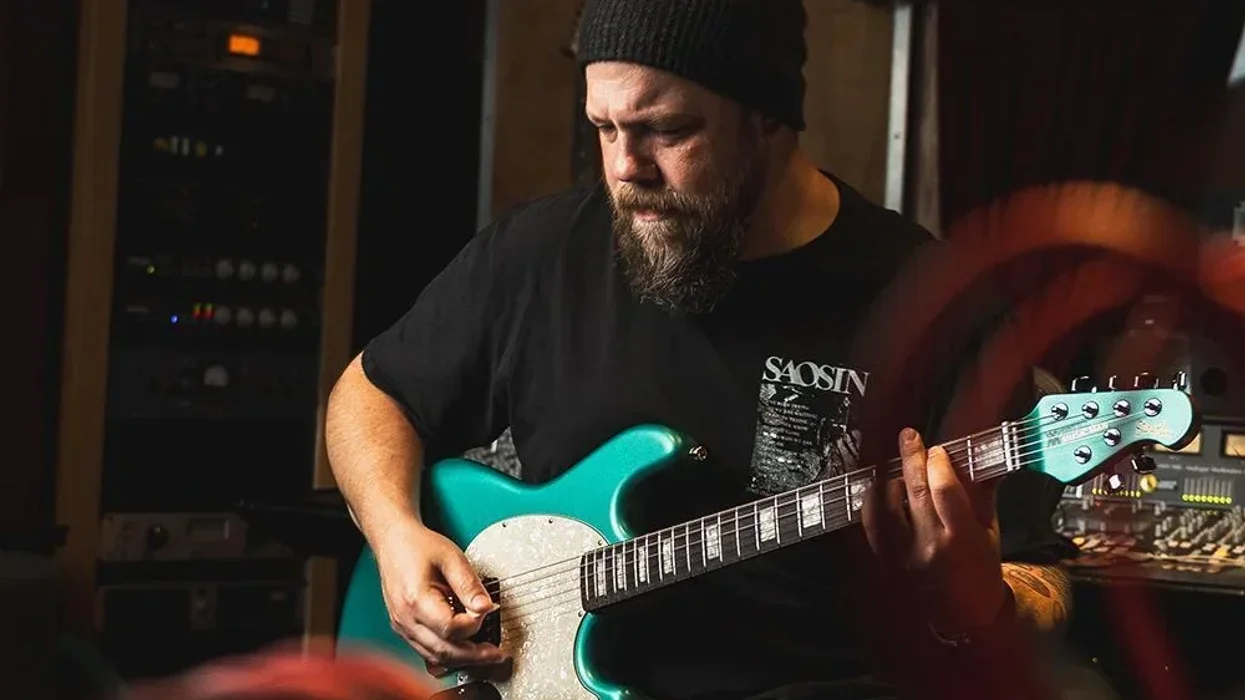
“We will have something for everyone,” said Samantha Hunter, Director of Artist Relations and Campus Events at Sweetwater. “We are creating an unforgettable celebration for music lovers. You can check out the booths from all our partner vendors, meet some amazing artists, see some amazing gear, as well as save some money with the fantastic deals we have planned.”
This year’s GuitarFest will feature the return of DealZone, a popular destination from previous events. Attendees can enjoy exclusive, in-person savings of up to 70%.
Registration for this free event is available now at Sweetwater.com/guitarfest/, where visitors can stay up to date on all the planned activities. Registrants will also be entered for a chance to win a $2,500 Sweetwater giveaway.
This event is family friendly and takes place on Sweetwater’s state-of-the-art campus located at 5501 US Highway 30 West in Fort Wayne. The Sweetwater campus includes the largest music store in the United States and other attractions for visitors to enjoy.
Benson Deep Sea Diver Fuzz-Echo Review
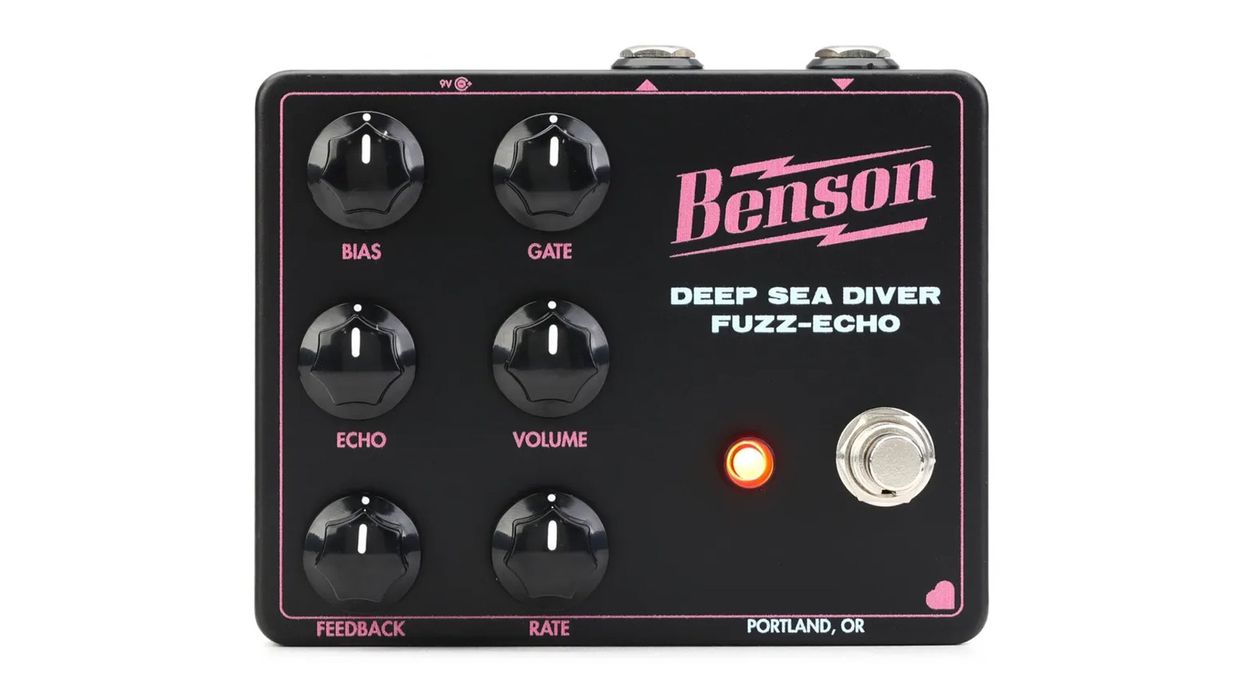
There are more flexible means for mashing up fuzz and delay than Benson’s Deep Sea Diver. And in a time of preposterously low-priced pedals, there are more economical methods, too. But there’s no guarantee that a more traditional and cost-conscious path will yield results as interesting—or inspirational—as those offered by the Deep Sea Diver. It’s a pedal that often serves up zigs where you seek zags—depending on your sense of adventure and creative latitude, it can feel versatile, forgiving, and full of exciting surprises.
Bathyspheric Battiness
The Deep Sea Diver was developed with Jessica Dobson, who fronts the band that shares the pedal’s name—and for whom more unusual applications of the fuzz/delay equation are a sonic cornerstone. The basic architecture of the Deep Sea Diver makes a great departure point for any player keen to ply the odder corners of that stompbox formula. It’s hard to know firsthand exactly what that architecture is—Benson flipped the circuit board so that you don’t see components, but rather a stylized representation of Dobson’s face in silhouette. (For the record, the solders you can see all look exceptionally tidy).
Chris Benson says that the 3-transitor fuzz section of the circuit uses a mutant mix of the 2-transitor Tone Bender MK 1.5 and the 3-transistor Tone Bender MK 2.0 as a foundation. Dobson says she envisioned a less hectic version of the ZVEX Fuzz Factory—a relation borne out here by the gate and bias controls. The delay section, meanwhile, is built around a PT2399 chip. This is a device many builders have put to creative use in spite of first turning up in karaoke machine delays. Its sonic signature—lo-fi, hazy—can be similar to that of bucket brigade delays, but still occupies a different lane than the analog EHX Memory Man and Diamond Memory Lane devices that underpin Dobson’s rig. As a whole then, the Deep Sea Diver doesn’t really replicate any particular part of Dobson’s tone recipe as much as it adds a new color formed in the spirit of where her playing has been and where it might be going.
One Deep Sea Diver feature that is a fixture of Dobson’s tone is a delay that is situated before the fuzz—except for when it isn’t. By holding down the bypass switch while powering up, you can reverse the order of the effects. If you’ve never experimented with switching fuzz and delay, the results can be revelatory.
Submarine Flip Flops
Given how interesting it is to move between the order of effects on the Deep Sea Diver, it’s a shame that you can’t make the switch without powering off the unit. Obviously, that’s not the most complicated process, but it’s also not one you’ll attempt in the middle of a song or set. Many pedals enable effect-order switching via a toggle or alternate footswitch input. In this case, the latter possibility was difficult for good reason, as pressing and holding the footswitch activates an endlessly entertaining runaway oscillation effect.
To a passively listening bystander, a switch in fuzz/delay effects order isn’t always glaringly obvious. In a very general sense, fuzz before delay results in greater clarity, and vice versa. But on the Deep Sea Diver, situating the delay before the fuzz lends a gauzy, foggy smear around the edge of transient notes and the repeats that you feel as much as hear. Comparing the Deep Sea Diver to a bucket brigade delay and a ZVEX Fuzz Factory, you can hear why Chris Benson employed the PT2399 chip. There’s a slightly more lo-fi blur to the Deep Sea Diver’s delay signature, which, to my ears, lends extra mystery.One Deep Sea Diver feature that is a fixture of Dobson’s tone is a delay that is situated before the fuzz—except for when it isn’t.
But it’s the fuzz section of the Deep Sea Diver that really expands its performance envelope. The gate and bias controls both have impressive range and work together pretty seamlessly to broaden the pedal’s fuzz voice. There are lots of collapsing, fractured fuzz-on-the fritz and dying-AM-radio sounds made more appealing by the smoky delay signal. You’ll find many shades of super-cool mid-1960s buzz, too. But it’s also capable of unique, punchy drive sounds that hit hard and are easy to compose with, and situate in a mix without sounding entirely unhinged. The Deep Sea Diver will happily go bonkers if that’s what you’re after though, and as you get a feel for the way the gate and bias controls interact you might not even miss the conspicuously absent gain level control—which, I venture, would complicate matters significantly.
The Verdict
I played the Deep Sea Diver next to a few different fuzz/delay combinations, and there is an audible cohesiveness in the two effects at the Benson's core. Furthermore, the resulting dovetailed fuzz/delay voices lend the Deep Sea Diver a truly individual voice at many settings. Though it falls short of mimicking the butter-smooth sustain of, say, a Big Muff and a Boss DD-5, it can still dish many rich fuzz tones in that spirit—just a bit filthier. The Deep Sea Diver is most certainly eccentric, just as its creators no doubt intended. But it’s not exclusively weird. There are plenty of sounds here for classicists, even if the Deep Sea Diver tends to beckon the player toward more unorthodox ends.
James Bay on Failed Solos, Onstage Adrenaline, and How to Hire a Band
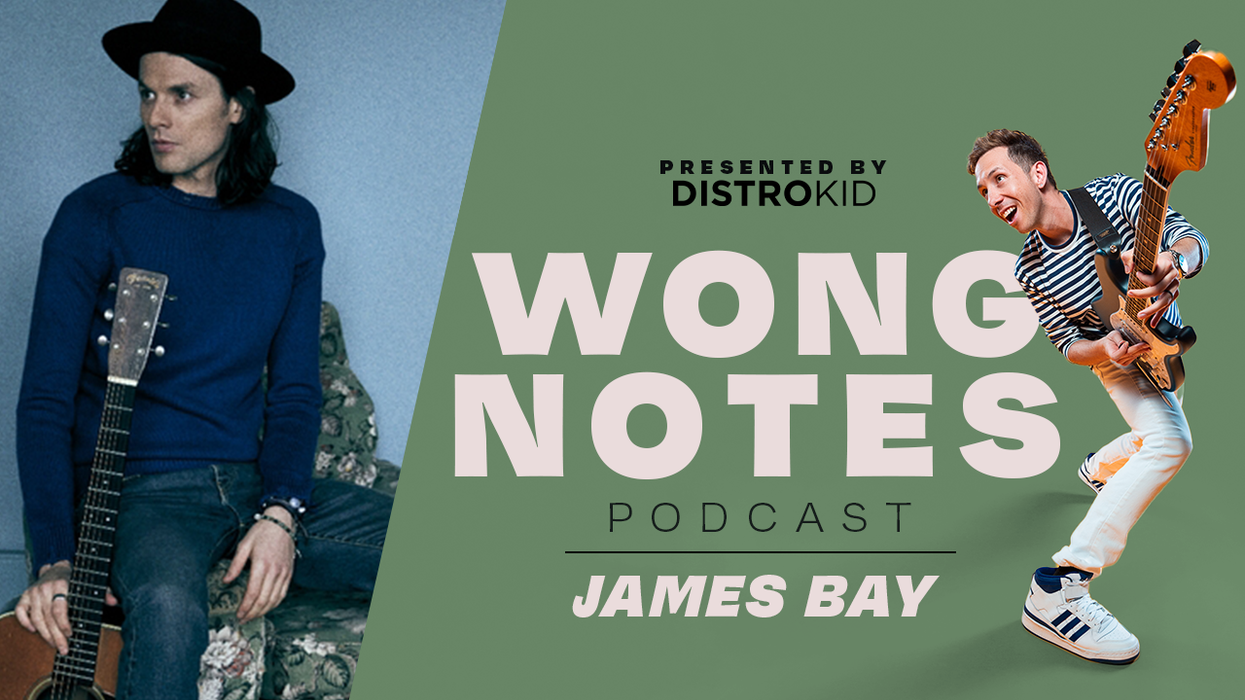
On this episode, James Bay joins Cory Wong from backstage at the 9:30 Club in Washington, D.C. (It takes Wong all of 10 seconds to recognize and name the green room.) Bay is still supporting his fourth full-length record, Changes All the Time, and Wong picked up on a different guitar approach on the new album. Bay walks him through how his playing matched the collection’s title.
Bay also reveals the first solo he learned to play (or, rather, failed to learn to play; it’s a Bon Jovi hit), and how Jack White’s philosophy of struggle against his instrument has shaped Bay’s relationship to his own guitars. As bandleaders, Wong and Bay both have plenty of experience hiring players to join them in studio and on the road, so what do they look for when selecting colleagues? Tune in to find out.
It wouldn’t be a chat with a Minnesotan guitarist without some Prince talk, so stick around to learn the appropriate etiquette for covering The Artist when touring his home state.
New “Broken-In” P-Bass Feels 60 Years Old
Realistic vintage-like wear on the neck and body of this rock-solid P-Bass make it feel as familiar as a favorite sweater.
Featuring a variety of vintage colors finished in Road Worn® aged nitrocellulose lacquer, the Vintera II Road Worn ‘60s Precision Bass recreates the look and feel of a well-played classic. The limited Road Worn models are enhanced with a new subtle aging process combining light checking, gentle wear patterns and a semi-gloss finish, while maintaining the authentic broken-in feel players love about vintage Fenders. The ‘60s “C”-shape maple neck with 7.25” radius rosewood fingerboard and vintage-tall frets provides supreme comfort and outstanding feel. Under the hood, you’ll find a vintage-style ‘60s split-coil Precision pickup that delivers all the warm, dynamic and powerful tone that made Fender famous. The vintage-style 4-saddle bridge and vintage-style tuning machines provide classic looks with enhanced intonation and tuning stability to complete the package. Options include Rosewood Fingerboard in Fiesta Red and Charcoal Frost Metallic.
Taylor Guitars Adds Three Models to Successful Gold Label Collection
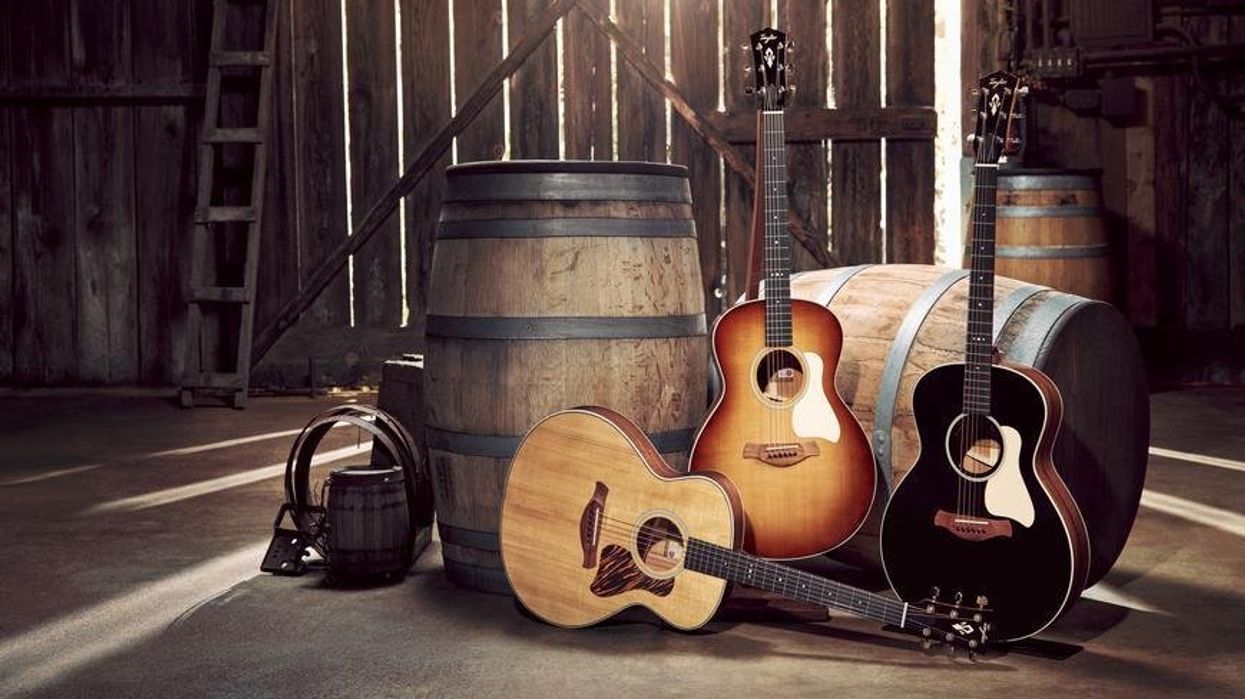
Today, Taylor Guitars, the leading global builder of premium acoustic guitars, announced the expansion of its Gold Label Collection with three new models: the Gold Label 514e, Gold Label 714e, and Gold Label 817e. The launch follows the success of the Gold Label Collection 814e introduction in January and Grand Pacific models in June, reflecting strong market demand for the heritage-inspired line. The new models bring the Gold Label collection to 18 total models, offering players more options within Taylor's premium acoustic range that delivers a rounder, warmer, more robust flavor of acoustic tone. The models are available at authorized Taylor dealers worldwide and on taylorguitars.com.
Three Defining Innovations
The Gold Label Collection showcases three key innovations that set it apart from traditional Taylor offerings. Fanned V-Class® Bracing features a fan-like arrangement of braces in the soundboard's lower bout, delivering on the original promise of a flexible voicing platform that gives these models a warmer, more resonant, more powerful sound. The patented Action Control Neck® features a long-tenon neck joint that extends deeper into the body to boost low-end resonance while maintaining a slim, fast-playing profile. It also enables quick, precise string height adjustments with a turn of a bolt through the soundhole without the need to remove the neck or strings. Completing the package, the collection's Heritage-Inspired Aesthetics draw from old banjos and mandolins, early Taylor designs, and Powers' pre-Taylor archtop work, featuring his modified headstock shape with an angled back cut and a script-style Taylor logo inlay and unique pickguard shape.
Gold Label 514e Super Auditorium
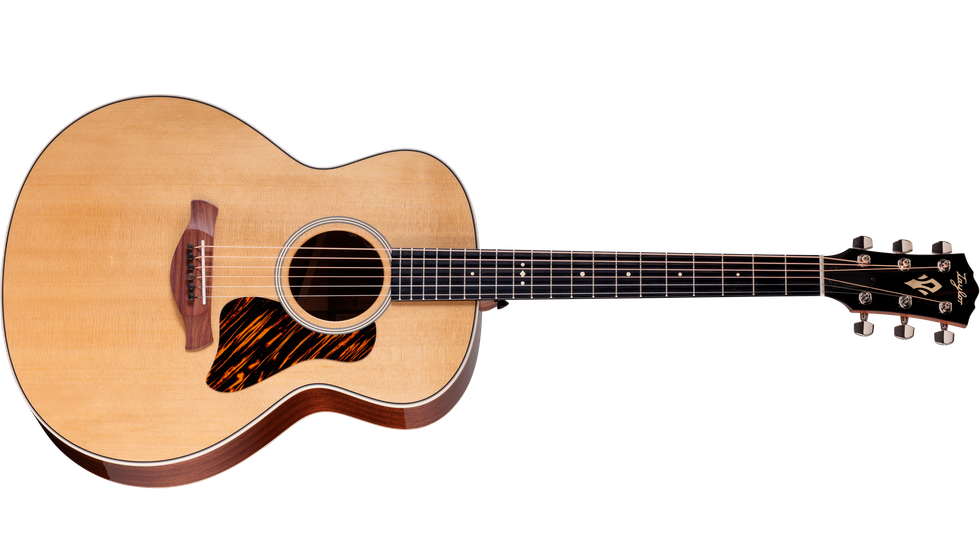
Solid mahogany back and sides paired with torrefied Sitka spruce deliver a rich, earthy midrange character with woody response and powerful projection. Available in natural, blacktop or golden-brown sunburst finishes with cream-colored "Crest" inlays and cream body binding.
Gold Label 714e Super Auditorium
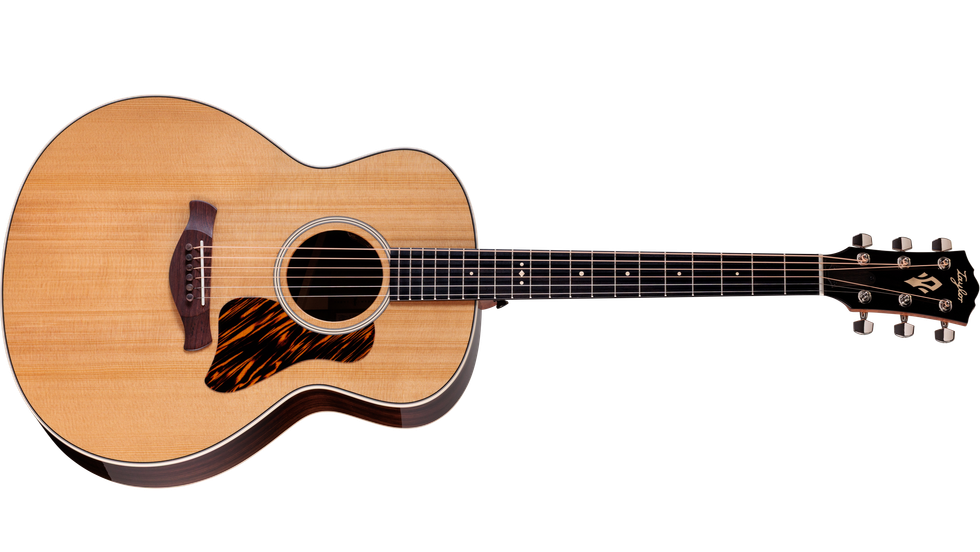
Indian rosewood and torrefied Sitka spruce showcase rosewood's characteristic deep lows, rich trebles and blooming overtones with impressive dynamic range. The model features understated appointments that channel the collection's workhorse spirit.
Gold Label 817e Grand Pacific
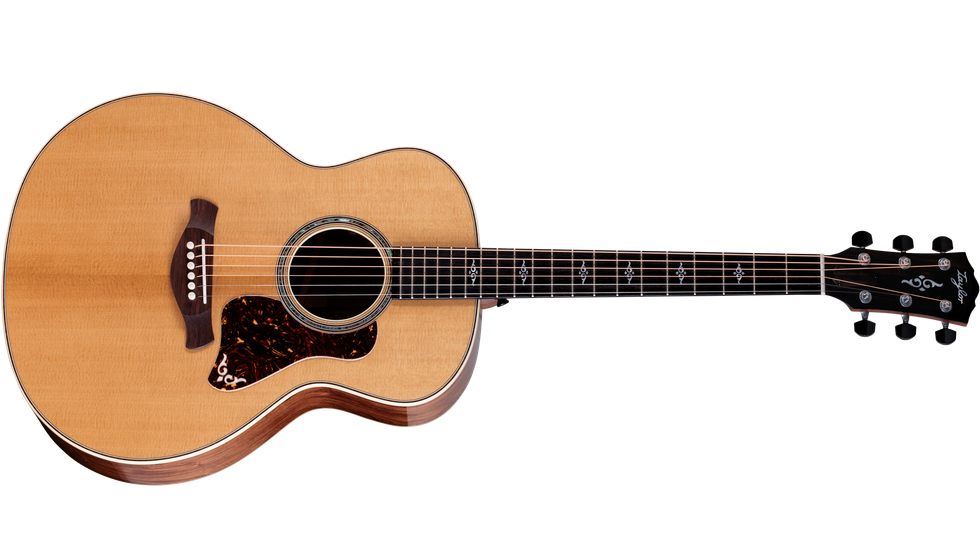
Honduran rosewood and torrefied Sitka spruce offer harmonically rich tone with inspiring old-school sonic character. The Grand Pacific body shape, with 3/8-inch of extra depth at the soundhole, provides greater volume, warmth and low-end expansiveness that are ideal for robust strumming and dynamic flatpicking.
Stage and Studio Acclaim
The Gold Label Collection has earned praise from both recording professionals and touring crews for its distinctive sound and innovative features. Producer/engineer Ben Moore, who has recorded guitar players for over 30 years, noted the collection's unique sonic character: "When a client opened the case and I saw a Taylor, I already had a sonic shape in mind before they strummed a single chord. The Gold Label guitars sound nothing like those guitars. The harmonic complexity
and midrange voice are nothing like any Taylor I have heard before. Microphones LOVE them.”
The Gold Label’s practical innovations have also won over touring professionals. "Having the 517e out on the road was such a treat,” said Matt Yankovich, Guitar Tech for Balance and Composure, and Mom Jeans. “The Action Control Neck is a touring guitar tech's dream come true — finally having the ability to quickly make action adjustments on the fly to keep things comfortable without needing to sand down saddles is an absolute game changer in the world of acoustic guitars."
The Gold Label 514e, 714e and 817e models are available now at authorized Taylor dealers worldwide starting at $2,599. All models include Taylor's Deluxe Hardshell Case and feature LR Baggs Element VTC electronics. For more information about the Gold Label Collection, visit TaylorGuitars.com.
EVH Launches 5150 Iconic Series 15W EL34 Head
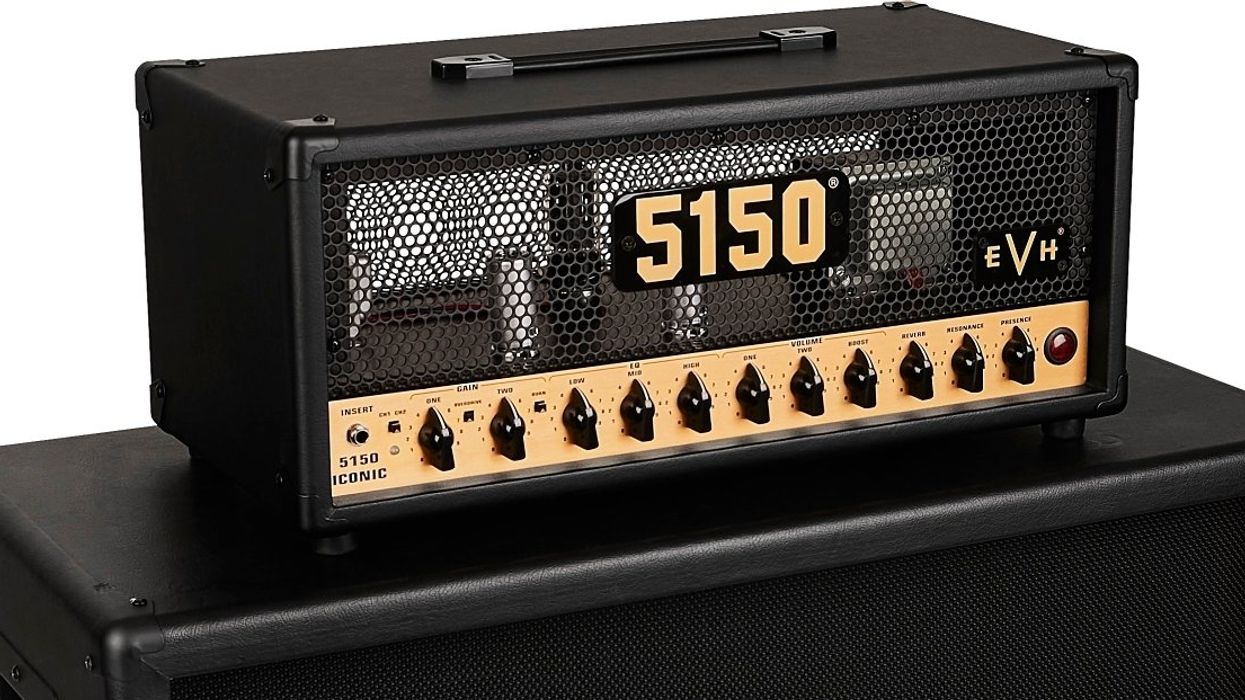
The EVH® 5150® Iconic® Series satisfies the needs of gigging and recording guitarists craving that powerful EVH tube tone, but at a more affordable price. Evolving from the revered EVH 5150III® amplifiers, the Iconic Series delivers the signature sound and growling gain that Eddie Van Halen made famous throughout his groundbreaking career.
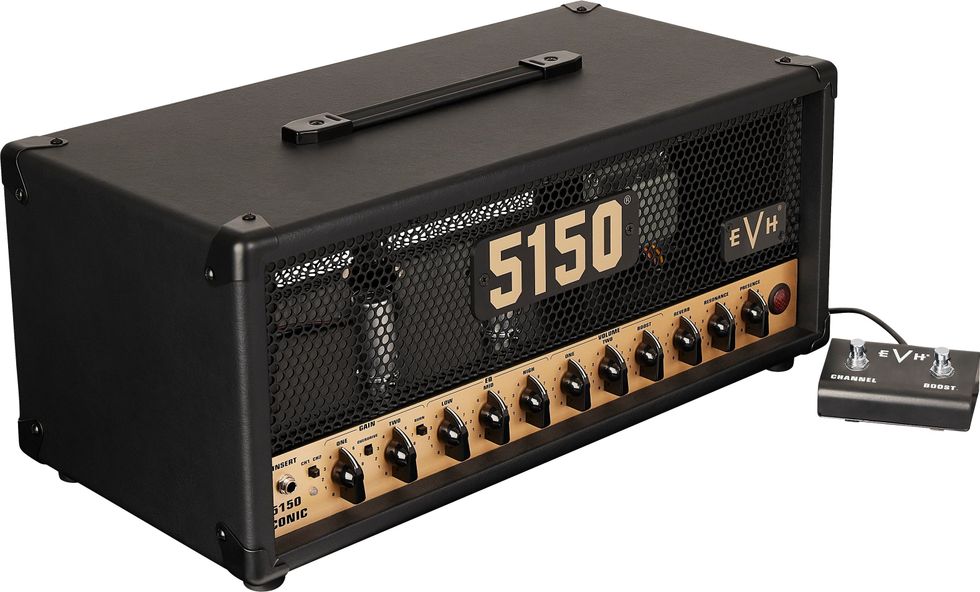
Designed by renowned amp engineer, James Brown, the 5150® Iconic® Series 15-watt Head is powered by one EL34 power tube and voiced by a complex, multi-stage hybrid preamp section anchored by a duet of ECC83 tubes providing all the fire power the modern guitarist needs.
Punching above its weight, this head features two channels with an extra voicing on each for even more versatility. The Green channel boasts an overdrive button to run from clean tones to increased gain, while the Red channel’s burn button adds fiery crunch that’s ideal for blistering leads. Each channel houses its own gain and volume controls, allowing for level-matching the volume when switching between the clean and high gain channels. The Boost control allows you to add another 10Db of foot-switchable volume to your tone - perfect for ensuring your solos cut through the mix.The control panel also includes shared EQ (Low, Mid and High), global resonance and presence knobs to adjust the low- and high-end aspects of your tone, and a global reverb to add the perfect amount of bounce and decay for any room.
Other features include a two-button footswitch, effects loop, dual parallel speaker output jacks, ¼ power switch to reduce wattage - allowing you to crank the amp and still preserve tone but without destroying your neighbor’s solitude, and a speaker-emulated DI XLR with power amp mute for accurate all-tube EVH tone for recording direct or using through any PA system. Sporting sophisticated and distinctive EVH style, the 5150 Iconic Series 15-watt Head is wrapped in Black textured vinyl with a brushed gold anodized aluminum front panel and black steel grille featuring gold and black 5150 and EVH logo badges. This This tube head is finished off with a brushed gold anodized aluminum control panel, vintage-style chicken-head knobs and molded black plastic top handle.
Learn more here.
D’Addario Introduces the Premium String Change Mat
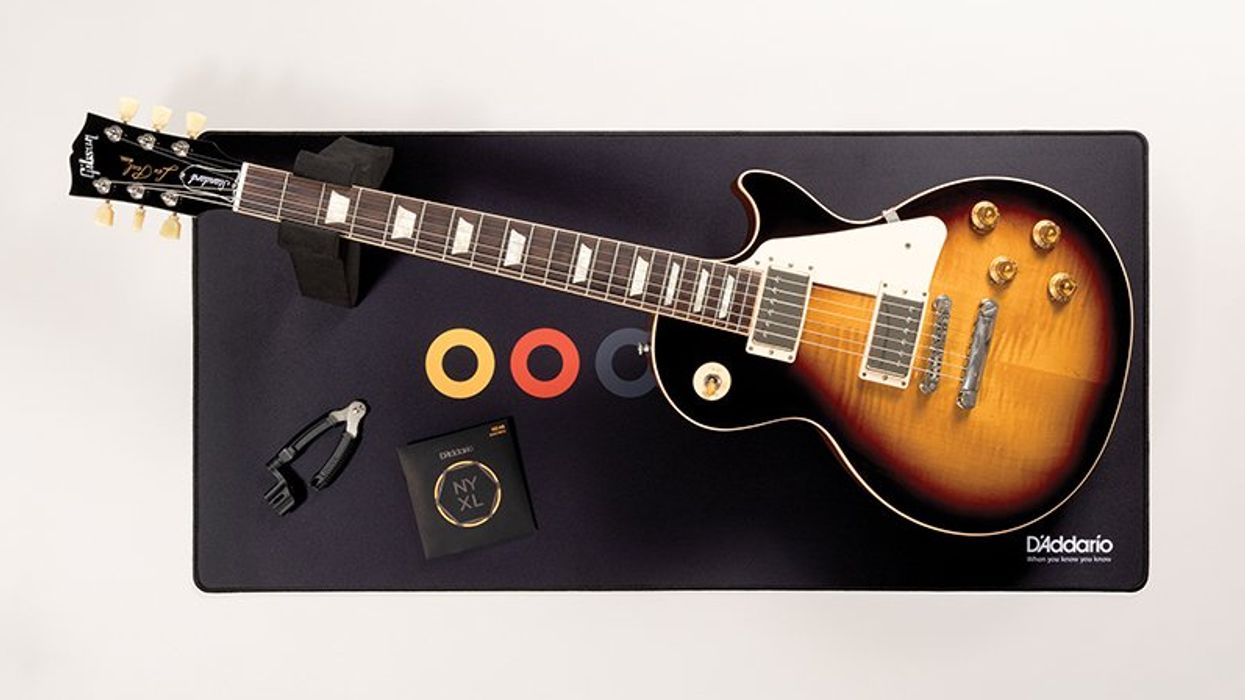
D’Addario announces the Premium String Change Mat, a must-have for luthiers, techs, and players who need reliable, finish-safe support during string changes and instrument maintenance.
Reliable Support for Every Restring & Repair
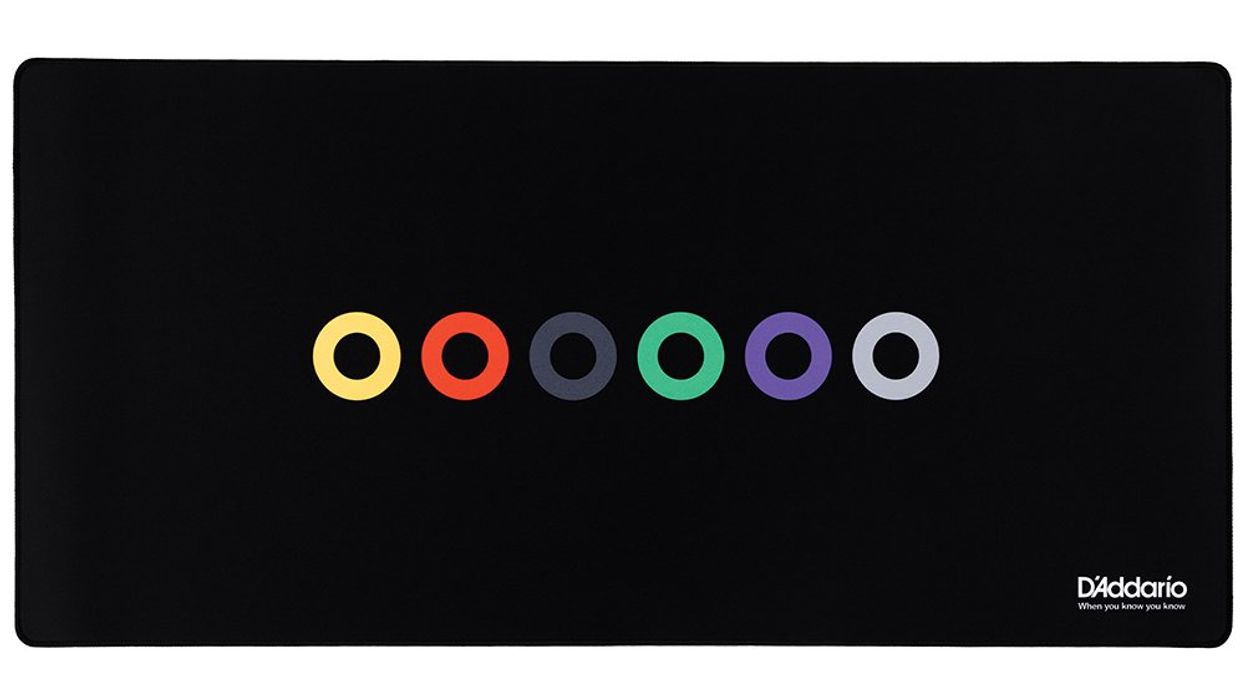
Designed with D’Addario’s iconic ball-end logo, the oversized mat measures 37.4” x 17.7”. On the surface is a soft, smooth fabric surface that’s safe for all finishes. Meanwhile, the underside is made of anti-slip rubber to ensure stability while you work, and the stitched edges improve long-term durability. Whether you’re performing an at-home tune up or prepping gear on the road, this mat keeps your instrument steady, protected, and scratch-free while you care for it.
A Must-Have Tool
"We want you to enjoy changing your strings. This mat was designed to be comfortable and functional, transforming your string change from a chore to a retreat," said D'Addario's Business Development Manager, Danny Mele.
Features:
- Soft, Smooth Fabric Surface
- Anti-Slip Rubber Underside
- Stitched Edge
- Ethically sourced and packaged with zero plastic
- D’Addario’s iconic ball-end logo
Product Info:
- Street Price: $29.99
- Available now at daddario.com and through participating retailers and distributors
- More Info: https://ddar.io/pscm-pr


